Twitter Timeline (aka ‘X’): From Founding to Present
Few platforms have so profoundly shaped the 21st-century media and political landscape as Twitter. Launched in 2006 as a quirky microblogging experiment in Silicon Valley, Twitter rapidly evolved into a global public square — a real-time newswire, activism megaphone, cultural barometer, and political battleground all in one. From the Arab Spring to #BlackLivesMatter, celebrity feuds to presidential declarations, Twitter didn’t just reflect the world — it influenced it.
But in 2022, everything changed.
The takeover by Elon Musk, the billionaire tech entrepreneur and self-styled “free speech absolutist,” marked a sharp and chaotic break from Twitter’s legacy. In short order, Musk dismantled key moderation teams, reinstated accounts once banned for extremism or disinformation, and transformed the platform into a private entity under his X Corp umbrella. The iconic blue bird gave way to a stark new identity: X — signaling not just a rebrand, but a fundamental shift in mission, culture, and political alignment.
This timeline chronicles Twitter’s full arc from inception to its present incarnation as X: a detailed account of its business milestones, technological evolution, political influence, and growing alignment with right-wing ideology under Musk’s ownership. Drawing on a wide range of journalistic and academic sources, this narrative highlights how a once-fractious but largely liberal-leaning tech company became a controversial hub for “anti-woke” politics, misinformation, and culture war skirmishes — with global implications.
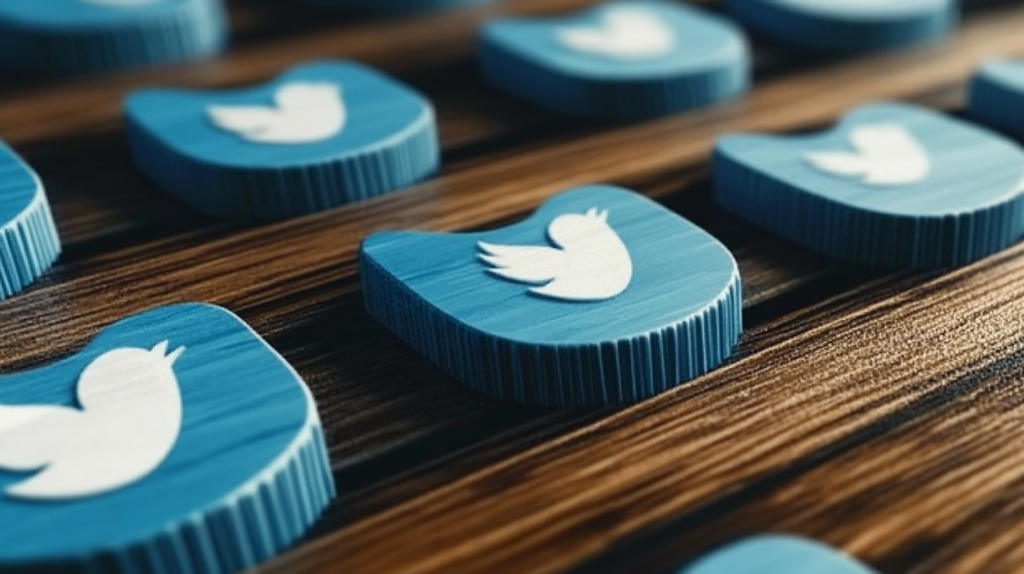
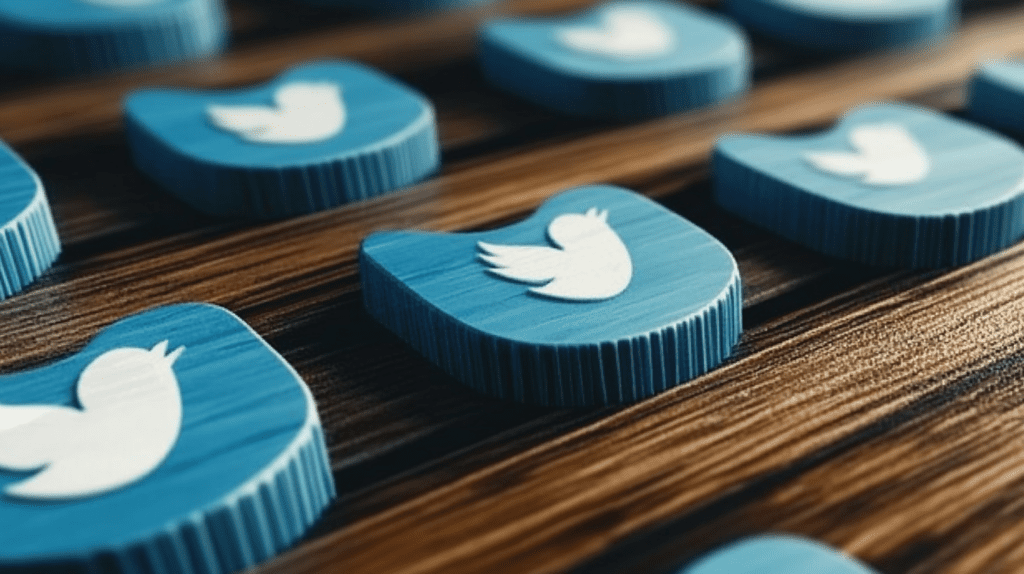
2006 – Birth of a New Platform
- March 2006: In a brainstorming at Odeo (a San Francisco podcast startup founded by Noah Glass, Biz Stone, and Evan Williams — the latter of whom would go on to later found the longform writing platform Medium), Jack Dorsey and colleagues conceive a text-message status sharing service. By March 21, Dorsey sends the first-ever tweet – “just setting up my twttr”, marking Twitter’s official creation.
- July 2006: Twitter (then styled “twttr” as was the vowel-less fashion at the time) launches to the public as a microblogging platform allowing 140-character posts. It initially operates under Odeo, but in October the founders form the Obvious Corporation and buy out Odeo’s investors, acquiring Twitter’s intellectual property.
- August – September 2006: Early users begin to see Twitter’s potential. In August, tweets about a California earthquake demonstrate Twitter’s value for real-time news by eyewitnesses. In September, twttr is rebranded as Twitter after acquiring the domain, finally graduating into the land of vowels.
2007 – Rapid Growth and Social Buzz
- March 2007: Twitter gains international buzz at the SXSW conference Interactive track. Usage explodes when attendees use it for real-time updates, a tipping point that greatly expands Twitter’s userbase.
- April 2007: Spun off as its own company, Twitter, Inc. begins to operate independently from Obvious Corp, the parent company of Odeo. Twitter also closes its first venture funding round in April, raising $5 million led by Union Square Ventures and venture capitalist Fred Wilson, who would become one of Twitter’s most influential backers, at a ~$20 million valuation. Other early investors included Ron Conway, Marc Andreessen, Chris Sacca, Joi Ito, and Dick Costolo (who would later become its CEO).
- August 2007: User-driven innovation gives rise to the hashtag. Invented by user Chris Messina to group topics, the “#” hashtag debuts and later becomes an official Twitter feature for trend tracking. This year, Twitter’s growth is so rapid that frequent server crashes occur, introducing the world to the iconic “Fail Whale” error image created by artist Yiying Lu (a symbol of its early growing pains).


2008 – New Leadership and New Capital
- June 2008: Twitter raises a second funding round (Series B) with new investors including Spark Capital, Tim Ferriss, Kevin Rose of digg, and Jeff Bezos’s fund, bringing in around $22 million.
- July 2008: Twitter acquires Summize, a search engine for tweets, to integrate search functionality into the platform (Twitter Acquires Summize | Union Square Ventures) — greatly enhancing users’ ability to find real-time conversations.
- October 2008: In a major leadership change, co-founder Jack Dorsey steps down as CEO (though staying on to become board chair), and fellow co-founder Evan Williams assumes the CEO role. Soon after, he and co-founder Biz Stone would meet with Mark Zuckerberg to discuss (and ultimately reject) a potential acquisition by Facebook at a $500 million valuation. Investor and Zuckerberg mentor Peter Thiel indicated the 2 parties couldn’t come to an agreement about the valuation of the Facebook shares. Instead, under Williams as CEO, Twitter continues its meteoric growth and begins attracting celebrities and media attention.
2009 – Mainstream Attention and Activism
- January 2009: An 18-year-old hacker gains access to several high-profile celebrity accounts including Barack Obama and Fox News. The cybercriminal gained entry using an automated password-guesser.
- February 2009: Twitter closes a $35 million Series C funding round led by Benchmark Capital and IVP, fueling its expansion. By now, Twitter is a hot Silicon Valley startup with accelerating user adoption.
- April 2009: Celebrity power boosts Twitter’s profile. Ashton Kutcher beats out CNN to be the first with 1 million followers, and Oprah Winfrey sends her first tweet during an episode of her show. Evan Williams appears on Oprah to explain Twitter to a mass audience, reflecting how the platform had entered pop culture. That same month, a hacker would gain access to a Twitter administrative account, prompting an FTC investigation that ended in a settlement the following year in which Twitter agrees to establish an independently audited information security program.
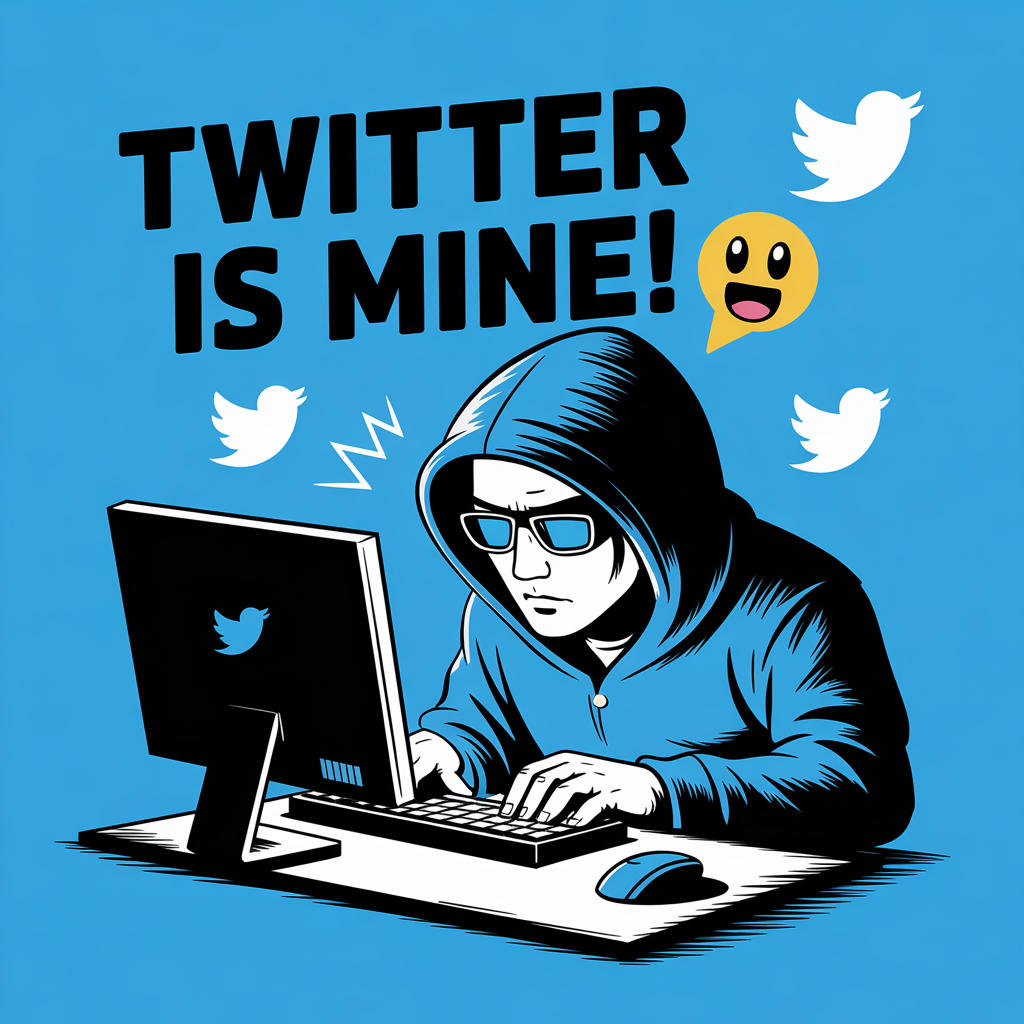
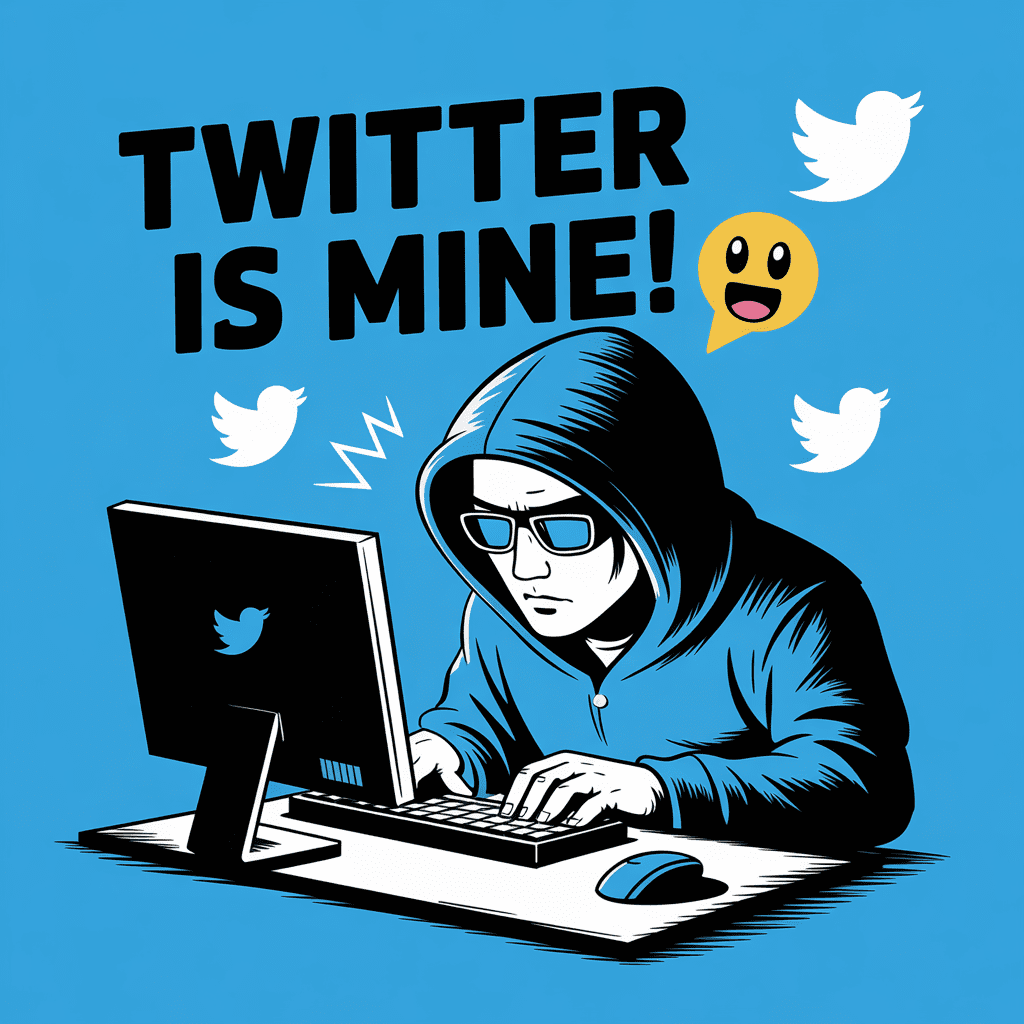
- June 2009: Twitter plays a pivotal role in global events. During Iran’s disputed election, protestors use Twitter to share information despite government censorship. In fact, Twitter delays a scheduled maintenance downtime at the request of the U.S. State Department to ensure Iranian activists stay connected during demonstrations. Western observers dub this the “Twitter Revolution,” as the platform enables citizens to broadcast protests in real time. The same month, Twitter introduces Verified Accounts (blue check marks) to authenticate public figures – a response to high-profile impersonations and even a lawsuit threat from baseball manager Tony La Russa (Facing A Lawsuit And Complaints From Celebs, Twitter Launches Verified Accounts | TechCrunch).
- September 2009: In a sign of investor confidence, Twitter raises $100 million at a $1 billion valuation, bringing in institutional investors like Insight Venture Partners, Morgan Stanley, and T. Rowe Price (Twitter gets new round of funding, new backers | Reuters). Despite having no profitable business model yet (which wasn’t all that uncommon for the hottest Silicon Valley companies at that time), the cash and skyrocketing user growth position Twitter as a leading social media platform.


2010 – Monetization and New Management
- Jan 2010: Twitter closes a Series E funding round.
- April 2010: Twitter unveils its first revenue model with Promoted Tweets (paid advertisements appearing in search results and timelines) (Twitter unveils ‘promoted tweets’ ad plan | X | The Guardian). Co-founder Biz Stone emphasizes that ads must “meet a higher bar” of user engagement or they’ll be removed. This cautious approach to monetization shows Twitter trying to balance revenue with user experience. This month also Twitter acquires Cloudhopper, a wireless company whose SMS technology would much later in 2019 get them in hot water from a high-profile hack of CEO Jack Dorsey’s account.
- June 2010: Twitter reaches 65 million tweets per day and begins to be recognized as a real-time newswire of the internet. The platform is used to share on-the-ground updates during major events, from the FIFA World Cup to natural disasters, further cementing its role in media.
- September 2010: Twitter launches a major website redesign (“New Twitter”) with features like embedded photos/videos and infinite scroll, making the site more user-friendly. This change indicates Twitter’s evolution beyond simple text updates to a richer multimedia experience.
- October 2010: Another CEO turnover: Evan Williams steps down and Dick Costolo (Twitter’s COO) takes over as CEO (Twitter founder steps down as CEO, tapping COO Dick Costolo – Oct. 4, 2010). Costolo, a former Google executive, is tasked with accelerating growth and revenue. Under Costolo, Twitter soon expands advertising (adding Promoted Trends and Promoted Accounts) and continues scaling to meet surging usage.
- Dec 2010: Twitter raises a whopping $200 million Series F funding round, with Kleiner Perkins Caufield Byers joining the list of investors.
2011 – Expansion, Acquisitions, and the “Twitter Spring”
- January–February 2011: During the Arab Spring uprisings, Twitter becomes a vital tool for activists and citizens in Tunisia, Egypt, and beyond. Protesters use Twitter (and Facebook) to organize rallies and spread news globally. When Egypt’s government shuts down the internet, Twitter partners with Google on a “Speak-to-Tweet” service enabling Egyptians to tweet via voice phone calls (Google and Twitter launch service enabling Egyptians to tweet by phone | Google | The Guardian). This period cements Twitter’s reputation as a catalyst for free expression and democratic movements, even as debates arise over how much these revolutions were truly “Twitter-fueled.”


- April-May 2011: Twitter continues to grow, having announced it has nearly 200 million registered accounts in January. It tests new homepage designs and features to improve onboarding for new users (Timeline of Twitter – Wikipedia). The company also makes a notable acquisition in May – TweetDeck, a popular third-party Twitter client, for ~$40 million to integrate power-user features and prevent it from falling into competitor hands.
- June 2011: A significant platform update: Twitter introduces native photo sharing (in partnership with Photobucket), allowing users to attach images to tweets directly. Until now, images required third-party hosts like TwitPic. This move keeps more user activity in-platform.
- September 2011: Twitter raises a massive $800 million Series G funding at a $8 billion valuation – half of this helped early investors cash out, and half went to Twitter’s coffers. The cash prepares Twitter for global expansion and infrastructure scaling. The round brought in Russian investor Yuri Milner (who has also invested in Facebook, Airbnb, Spotify, and Alibaba, among others) and his firm DST.
- October 2011: Twitter uses its growing cash to acquire tech startups (like BackType for analytics) and rolls out a major redesign in December known as the “Fly” design. This overhaul introduces “Discover” and “Activities” tabs and a new integrated timeline, making it easier for newcomers to follow conversations. By year’s end, Twitter reports over 100 million active users.
2012 – Policy Challenges and Going Global
- January 2012: Twitter faces a new challenge – balancing free speech with local laws in far-flung jurisdictions (many of which were decidedly not free). It announces a “country-withheld content” policy, allowing it to block specific tweets or accounts in a given country to comply with legal demands (Twitter users threaten boycott over censorship accusation | X | The Guardian). The policy (criticized by some as censorship) is first tested in October, when Twitter, citing German law, blocks a neo-Nazi group’s account in Germany while keeping it visible elsewhere (Twitter blocks Nazi account in landmark move | News | Al Jazeera). Twitter pledges transparency for these takedowns, but the move sparks a debate on the platform’s role in protecting speech versus obeying governments.
- March 2012: On Twitter’s 6th birthday, CEO Dick Costolo announces the platform has 140 million active users generating 340 million tweets per day – a 40% jump in users from just six months prior. Twitter is now firmly part of the social media mainstream, used by news organizations, celebrities, and activists worldwide. The company opens global offices (in places like London, Tokyo and Detroit) to be closer to advertisers and local user communities.
- June 2012: Twitter unveils a slight rebrand – a new bird logo with no accompanying text, simplifying its image to the iconic silhouette alone. This reflects the brand’s confidence that the bird alone is recognizable as Twitter.
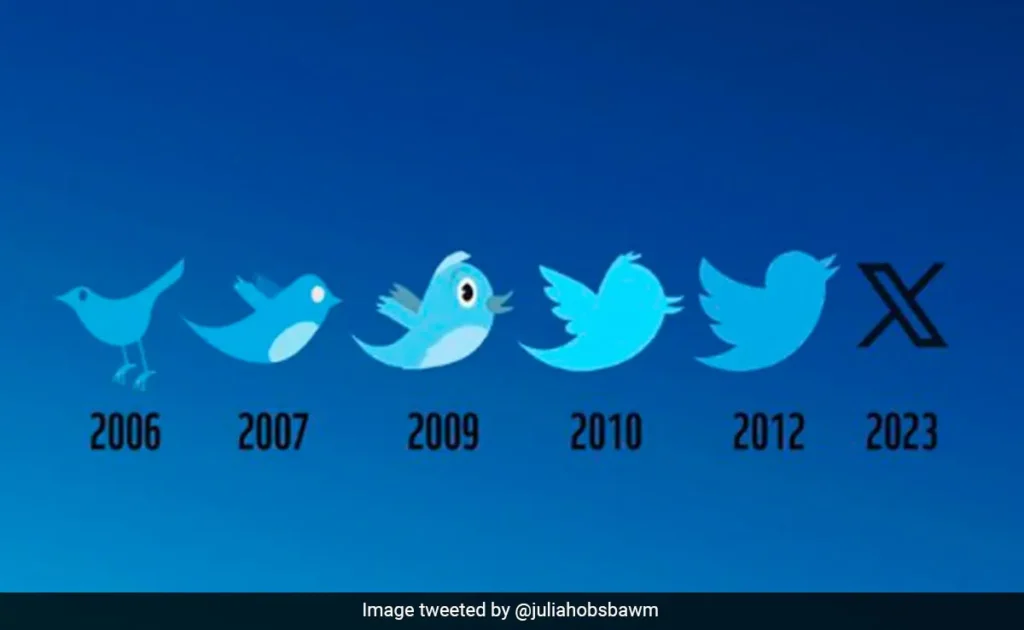

- October 2012: Twitter makes a strategic bet on video by acquiring a tiny video-looping startup called Vine for a reported $30 million. Although Vine’s app isn’t launched until January 2013, the six-second video format will soon become a cultural phenomenon (especially among youth, foreshadowing the short-video trend later seen with TikTok).
- December 2012: Twitter announces it surpassed 200 million monthly active users. The company’s rapid growth and increasing influence (often breaking news faster than traditional media) raise its profile – but also put Twitter under greater scrutiny regarding moderation of abusive content (which seems ever to proliferate) and reliability of information on the platform, presaging its later battles with disinformation and even political violence in its role during the planning of the January 6 attack on the US capitol.
2013 – Twitter’s IPO and the Rise of Real-Time News
- February 2013: Twitter is hacked, apparently by amateurs, yet over 250,000 user accounts had data stolen in the breach.
- April 2013: A stark illustration of Twitter’s influence – hackers hijack the Associated Press’s verified Twitter account on April 23 and tweet that explosions had injured President Obama. The false tweet causes a brief panic and a $136 billion stock market dip before it’s debunked minutes later (Hackers send fake market-moving AP tweet on White House explosions | Reuters). This incident, later claimed by a Syrian pro-Assad hacking group, underscores both Twitter’s power as a real-time news source and the new risks of disinformation and misinformation in the social media age. In response, Twitter accelerates security improvements (like offering two-factor authentication) to protect high-profile accounts.
- June 2013: Twitter further cements its role in real-time news by partnering with broadcasters. During massive protests in Turkey and Brazil, citizens turn to Twitter to organize and report, often ahead of TV news. Embattled Turkish President Tayyip Erdogan even outright blames Twitter for the unrest in his country. The term “citizen journalism” becomes closely associated with Twitter usage during fast-moving events. (A Breakout Role for Twitter? The Role of Social Media in the Turkish Protests | NYU Analysis)
- September 2013: Seeking revenue growth, Twitter greatly expands its advertising products and acquires mobile ad exchange MoPub for ~$350 million. It also confidentially files paperwork to go public. On September 12, Twitter breaks the news of its planned IPO with a tweet: “We’ve confidentially submitted an S-1 to the SEC for a planned IPO.”
- November 2013: Twitter goes public on the New York Stock Exchange. On November 7, the stock $TWTR debuts at $26/share, then soars over 70% on day one to close at ~$45 (Twitter stock soars in IPO ), giving Twitter an effective valuation of around $24 billion. The IPO fills Twitter’s bank account with ~$1.8 billion for expansion. Despite never having made a profit, Twitter’s successful IPO reflects investor belief in its importance in media and society. Post-IPO, Twitter aggressively pursues growth: it localizes in more languages, buys dozens of small companies (from analytics firms to second-screen TV apps), and nearly doubles its workforce in the coming year.

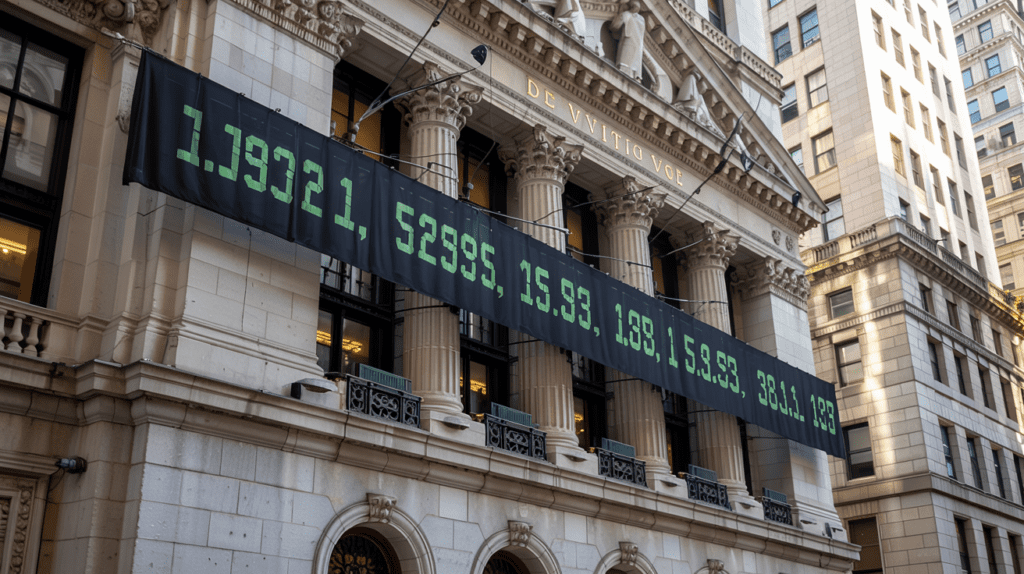
2014 – Power in Politics and Protest
- January 2014: Twitter acquires Gnip, a social data provider, to monetize the firehose of tweet data for analytics. The company is now pushing into data licensing, advertising, and new features to reach its ambitious post-IPO growth targets.
- Spring–Summer 2014: Twitter’s role in social movements becomes evident in the U.S. After the fatal police shooting of Michael Brown in Ferguson, Missouri (August 2014), on-the-ground accounts and hashtags like #Ferguson and #BlackLivesMatter trend globally on Twitter. Activists and eyewitnesses tweet live updates and videos from the Ferguson protests, forcing national media to pay attention. Analysis showed that social media – especially “Black Twitter” – drove sustained coverage of racially biased policing, making Ferguson a national news story (Twitter forced the world to pay attention to Ferguson. It won’t last. | Vox). This demonstrated how Twitter can elevate local issues to the forefront of American politics and media. (At the same time, the platform struggled with surges of racist abuse toward users like journalist Leslie Jones during these events, highlighting ongoing moderation challenges.)
- August–October 2014: Twitter faces mounting pressure to curb harassment and abuse. In the wake of events like Gamergate (a harassment campaign targeting women in tech) and the Ferguson conversations, CEO Dick Costolo acknowledges Twitter has been “horrible at dealing with abuse.”
- August 27, 2014: Twitter opens its new Analytics Dashboard, created earlier in the summer for advertisers and verified users, up to all users.
- December 2014: Rumors had been swirling that Twitter might be an acquisition target (Google and Facebook are whispered as interested), but no concrete offers emerge. Instead, Twitter had been doubling down on new features, rolling out new anti-abuse tools, such as an improved “Block” feature and a “Report Abuse” button, and later a “Quality Filter” to algorithmically hide offensive tweets (launched to verified users in early 2015). These efforts mark the start of Twitter’s multi-year journey to improve moderation, an issue that will continue to define its reputation.
2015 – Leadership Change and Product Evolution
- March 2015: Twitter rolls out a new “Quality Filter” feature to help curb trolls and give people ways to thwart abuse on the platform. This move comes in response to public criticism that Twitter had become a haven for trolls and hate speech – a reputation it’s actively trying to shake.
- June 2015: Amid stalled user growth and investor dissatisfaction, CEO Dick Costolo resigns effective July 1. Co-founder Jack Dorsey returns as interim CEO (Twitter CEO Dick Costolo Resigns – USNews.com), while Twitter’s board searches for a new permanent chief. This “founder’s return” sparks hope that Dorsey’s product vision can reinvigorate Twitter — in much the same way as his hero Steve Jobs’s triumphant return to Apple turned the company around and sent it into the stratosphere. Indeed, Dorsey immediately initiates changes and acknowledges Twitter’s persistent abuse problems, famously emailing “we suck at dealing with abuse” to staff.


- October 2015: Twitter’s board makes it official – Jack Dorsey is named permanent CEO (while he also remains CEO of his other company, Square) (Jack Dorsey confirmed as Twitter CEO | X | The Guardian). That same month, Twitter launches a marquee new feature, “Moments,” curated collections of tweets designed to help users catch up on big news stories and trends in a narrative format. Moments (originally codenamed “Project Lightning”) is an effort to make Twitter more accessible to newcomers by highlighting the best content on a given topic. Also in late 2015, Twitter replaces its star “Favorite” button with a heart “Like” to simplify engagement, and expands its Direct Messages to no longer be limited to 140 characters, aiming to compete with chat apps.
- November–December 2015: By year’s end, Twitter has about 305 million monthly active users, and while growth has slowed, the service is entrenched as a key platform for real-time communication.
2016 – “Timeline Tweaks” and Controversies
- February 2016: Twitter forms the Twitter Trust and Safety Council to continue ramping up its content moderation and safety initiatives, partnering with advocacy groups to advise on policies (this council will later be disbanded in 2022 under Musk).
- February 2016: Twitter makes a fundamental change to its core feature – the timeline. It begins rolling out an algorithmic timeline option that shows users the “best” tweets first instead of strictly reverse chronological order (Twitter wants you to see the ‘best’ tweets first | X | The Guardian). This opt-in feature (called “Show me the best Tweets first”) uses the algorithm behind “While You Were Away” to rank tweets a user may find interesting. The change sparks an uproar among loyal users tweeting #RIPTwitter, fearing the feed will become like Facebook’s algorithm. Twitter assures users the real-time feed isn’t going away and that the ranked tweets can be turned off. Despite initial backlash, the algorithmic timeline (enabled by default) is a watershed moment – Twitter tacitly acknowledges that pure chronology isn’t ideal for engagement or new user retention.
- March-April 2016: Twitter refines the “Moments” feature that lets individuals curate their own moments, expanding the feature by allowing embedded links within the iOS and Android apps. It also strikes a high-profile deal with the NFL in April 2016 to live-stream Thursday Night Football games on Twitter – an ambitious step into live video content and sports media. This partnership, which begins that fall, brings in millions of streaming viewers and is hailed as Twitter’s entry into TV-style programming.
- July 2016: Twitter faces a high-profile test of its abuse policies. After Leslie Jones (actress and comedian) endures a wave of racist abuse on Twitter during the release of Ghostbusters, Twitter permanently bans far-right provocateur Milo Yiannopoulos for instigating hateful harassment (Twitter Permanently Suspends Milo Yiannopoulos For Targeted Abuse). CEO Jack Dorsey intervened personally amid public outcry. This is one of the most prominent account bans to date and signals Twitter’s increasing willingness to crack down on hate – although critics still charge that enforcement is inconsistent. Also this month, CEO Jack Dorsey’s account is hacked by OurMine.
- September–October 2016: Rumors that Twitter might be acquired reach a peak. Companies including Disney, Google, and Salesforce explore bids, and Twitter’s board puts the company in play. Ultimately, no sale occurs – according to reports, suitors were scared off in part by Twitter’s persistent problem with trolls and abuse, which could conflict with a family-friendly brand like Disney (Twitter’s reputation for abuse is turning off potential suitors | The Verge). This revelation – that toxic content may have lowered Twitter’s buyout attractiveness – underscores the real business risk of unchecked abuse. Shortly after, in October, Twitter makes a painful decision to slash costs: it lays off about 9% of its workforce and shuts down Vine, the beloved 6-second video app it launched just three years earlier (Vine video-sharing app to be shut down by Twitter – The Guardian). Vine’s shutdown, announced on October 27, 2016, disappoints its devoted community and top Viners, but Twitter cites the need to focus on core services (and later, Twitter integrates video tools that Vine pioneered). By the end of 2016, Twitter is still independent, but struggling to reignite user growth, leading into a pivotal 2017.
- Nov 2016: During the 2016 U.S. presidential election, Twitter played a critical dual role, serving as Donald Trump’s primary platform for direct, provocative communication and simultaneously becoming a central arena for sophisticated disinformation campaigns led by the Russian Internet Research Agency (IRA). Trump effectively leveraged Twitter to bypass traditional media, energize supporters, and dominate public discourse, while Russian operatives used thousands of fake accounts to amplify divisive content, spread conspiracy theories such as “Pizzagate,” and strategically target swing voters. Additionally, an ecosystem of domestic far-right groups and conspiracy theorists amplified these efforts, exploiting Twitter’s engagement-driven algorithms and inadequate moderation policies to further polarize voters and manipulate electoral narratives. This dynamic underscored significant vulnerabilities in social media platforms, prompting debates about their responsibility in safeguarding democratic integrity.
2017 – Product Changes and Political Crossroads
- January 2017: Donald Trump is inaugurated U.S. President, bringing an unprecedented use of Twitter to the White House. Trump had used Twitter throughout the 2016 campaign, and now as President he continues to tweet policy pronouncements, attacks on opponents, and controversial statements directly to tens of millions of followers. This “Twitter presidency” marks a new era where a world leader’s unfiltered thoughts on social media drive news cycles. It also intensifies debates about Twitter’s responsibilities. Trump’s use of Twitter “as a direct line to the public” raises Twitter’s profile while also putting it in the political crosshairs whenever the President’s tweets are seen as violating policy or inciting harassment.
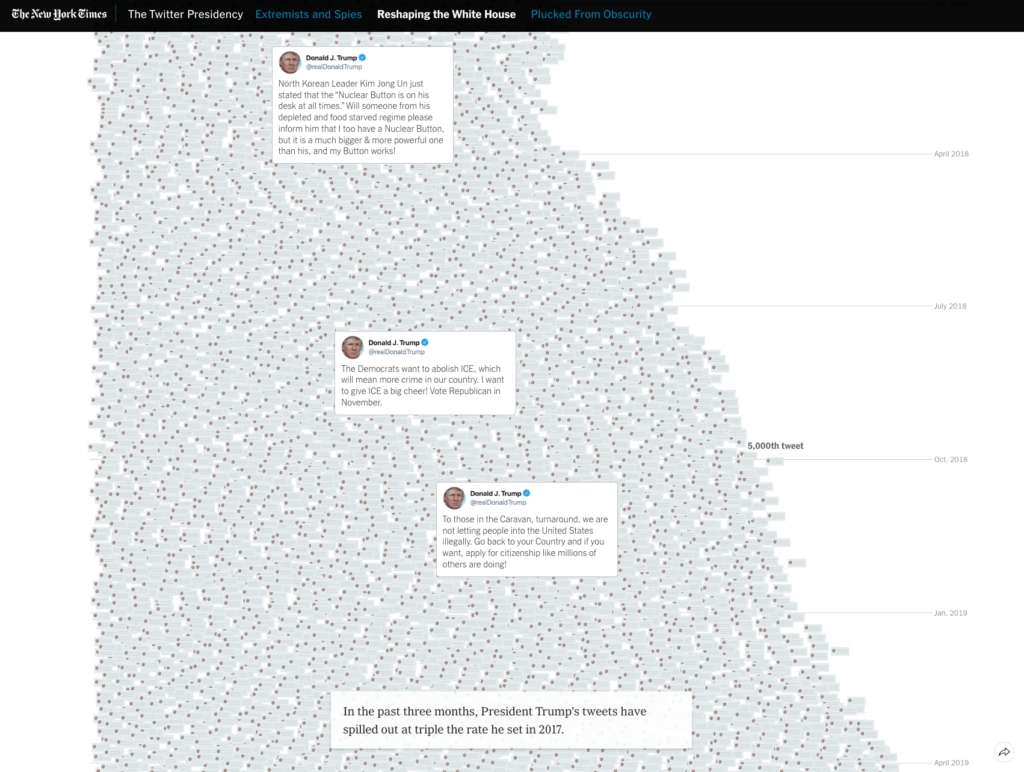

- March 2017: To improve safety, Twitter expands its anti-abuse features – it launches new filters to mute keywords, gives users the ability to hide abusive tweets in conversations, and implements AI tools to detect and limit the reach of tweets that “appear to be abusive.” Twitter also broadens its hateful conduct policy to ban more categories of abusive behavior (like repeated slurs or imagery). These steps come after years of criticism that the company wasn’t doing enough to curb harassment and extremist content.
- Summer–Fall 2017: Twitter experiments with fundamental product changes. In September, it begins testing 280-character tweets (double the traditional 140-character limit) with a small user group (Tweeting Made Easier – Blog – X) (Twitter to test 280-character tweets, busting old limit | Reuters). After data suggests longer tweets don’t negatively impact the experience, Twitter rolls out 280 characters for all users in November 2017, ending the iconic 140-character era. This change, while controversial to Twitter purists, is aimed at encouraging more thoughtful tweeting and attracting users who found 140 too limiting. Also in October, Twitter shuts down its underused Vine Camera and launches a lightweight “Twitter Lite” web version for emerging markets to grow its global user base.
140+140!
— jack (@jack) November 7, 2017
- October 2017: Russia’s interference in the 2016 U.S. election comes under scrutiny. Twitter, along with Facebook and Google, testifies before Congress about how Russian troll farms used social media to spread disinformation. Twitter discloses that some 36,000 bot accounts linked to Russia tweeted about the election. In response, Twitter bans advertising from Russian state media (RT and Sputnik) (Twitter’s Dorsey takes heat on bias allegations: Key moments from tech hearings – POLITICO) and beefs up efforts to detect fake accounts. The phrase “bots and trolls” enters public conversation about Twitter.
- November–December 2017: Under mounting pressure to curb abuse, Twitter enacts sweeping new rules against hate and abuse. It updates its terms to ban organizations that promote violence (leading to suspensions of accounts associated with white nationalists and neo-Nazi groups), and it prohibits “hateful imagery” and symbols in profiles or media. On December 18, Twitter begins enforcing a policy against users who claim affiliation with groups that use or celebrate violence – resulting in a purge of some accounts on the far-right and alt-right. It also finally bans accounts associated with the conspiracy cult QAnon that have been involved in harassment. These policy changes, rolled out just before 2018, represent Twitter’s most aggressive stance to date on moderation, attempting to shake the platform’s reputation as a haven for extremists.
2018 – Twitter in the Hot Seat
- February 2018: Twitter launches a tool for users to bookmark tweets, making it easier to save content for later privately (previously many users “liked” tweets just to bookmark them). It’s a minor feature, but part of ongoing tweaks to improve user experience. The company’s user growth has flattened around 330 million monthly active users (MAU), so product tweaks aim to drive engagement.
- April 2018: Amid the Facebook Cambridge Analytica scandal, Twitter also faces questions about data privacy. It reveals that an academic had accessed some Twitter data for Cambridge Analytica, though far less than what happened on Facebook. Twitter tightens its policies on data access and issues a transparency report on information and takedown requests from governments later in the year.
- May 2018: Twitter’s 330 million users are sent notices telling them to change their passwords after an internal leak exposed them in plain text on the company’s internal network. No user data appears to have been lifted, but security experts commended the company’s abundance of caution and general handling of the incident.
- Summer 2018: Twitter undertakes a major purge of fake and locked accounts to improve “health” on the platform. In July, it reportedly removes tens of millions of suspicious accounts, causing follower counts to drop for many high-profile users. This is part of a broader initiative, led by Twitter’s Legal, Policy and Trust & Safety head Vijaya Gadde and CEO Jack Dorsey, to measure and improve conversational health on Twitter (including partnering with academics on metrics for civility).
- August–September 2018: Twitter faces a defining political moment. On August 18, after other tech companies banned conspiracy theorist Alex Jones (of InfoWars) for policy violations, Twitter initially hesitates. But on September 6, 2018, Twitter permanently bans Alex Jones and InfoWars for abusive behavior (Twitter Bans Alex Jones And InfoWars; Cites Abusive Behavior – NPR), after he harasses a journalist on Twitter and violates its rules. This comes one day after Jack Dorsey testified before Congress. On September 5, Dorsey appears in back-to-back hearings where Republican lawmakers accuse Twitter of bias and “shadow-banning” conservatives – charges Dorsey flatly denies, stating “Twitter does not use political ideology to make decisions” and that any reduced visibility for certain accounts was an algorithm issue now fixed (Twitter’s Dorsey takes heat on bias allegations: Key moments from tech hearings – POLITICO). Democrats in the hearing counter that GOP allegations are a diversion, noting that President Trump himself uses Twitter prolifically. Dorsey’s testimony and the concurrent banning of figures like Jones illustrate Twitter’s balancing act: trying to enforce rules on hate and abuse without appearing partisan.
- October 2018: Ahead of the U.S. midterm elections, Twitter makes the bold move to ban all political advertising on the platform. On October 30, CEO Jack Dorsey tweets that Twitter will stop accepting political ads globally, stating “political message reach should be earned, not bought” ( Twitter political ads will be banned, CEO Jack Dorsey announced – CBS News). He argues that online political ads, with microtargeting and unchecked misinformation, present “significant risks to politics”. This policy, implemented in November, draws praise from some (as a stand against pay-for-play propaganda) and criticism from others (for potentially advantaging incumbents and media-backed candidates). It’s a clear differentiator from Facebook, which notoriously refused to fact-check political ads. Twitter’s stance underscores its evolving philosophy that the platform’s integrity in political discourse is more important than ad revenue.
2019 – Health of the Platform
- 2019 (General): Twitter’s focus this year is on the “health” of conversations and platform integrity. The company invests in machine-learning to proactively detect abusive material and spam. It reports progress in removing terrorist content following pressures to do so (claiming in mid-2019 that over 90% of terrorist content is removed by AI before users report it). CEO Jack Dorsey states improving conversational health is Twitter’s top priority, even at the expense of some user growth.
- June 2019: Twitter rolls out a redesigned desktop website with a simpler look, emoji button, and easier switching between latest and top Tweets. Though largely cosmetic, the update aligns the desktop with the mobile experience and is part of Twitter’s effort to modernize its technology stack. That same month federal authorities learn of an online threat made on Twitter to bomb a federal building, resulting in the arrest of 19-year-old Joel Schrimsher who pleaded guilty on Aug. 24 to conveying false or misleading information through the internet concerning the potential destruction of a federal building.
- October 2019: Twitter’s political ad ban (announced by Dorsey on Oct. 30) goes into effect in late November ( Twitter political ads will be banned, CEO Jack Dorsey announced – CBS News). This move pressures rival platforms to consider similar policies. Twitter defines political ads broadly (including issue ads about climate change, healthcare, etc.), carving out only a few exceptions such as voter registration promos. While Twitter forgoes some revenue, Dorsey and policy chief Vijaya Gadde argue that the minimal revenue from political ads isn’t worth the greater societal risk. Observers note this stance will become a contrasting point with Elon Musk’s later approach to political content.
- November 2019: Two security incidents occur when 2 former Twitter employees are charged with spying on the US for Saudi Arabia for stealing personal user information about critics of the Riyadh government, and hundreds of Android users had their data compromised via a Google Play exploit leveraged by third party apps.
- Late 2019: Activists and academics note that “Black Twitter” and other communities have made Twitter a hub for social movements (e.g., #MeToo in late 2017 and ongoing racial justice activism). At the same time, extremist content is less visible than a year prior thanks to enforcement. Twitter releases a transparency report showing a sharp rise in accounts actioned for abuse and a decrease in reports of spam – indicating some success in its health initiative. Nevertheless, abuse of women and minorities on Twitter remains a problem as documented by organizations like Amnesty International, keeping pressure on the company into 2020.
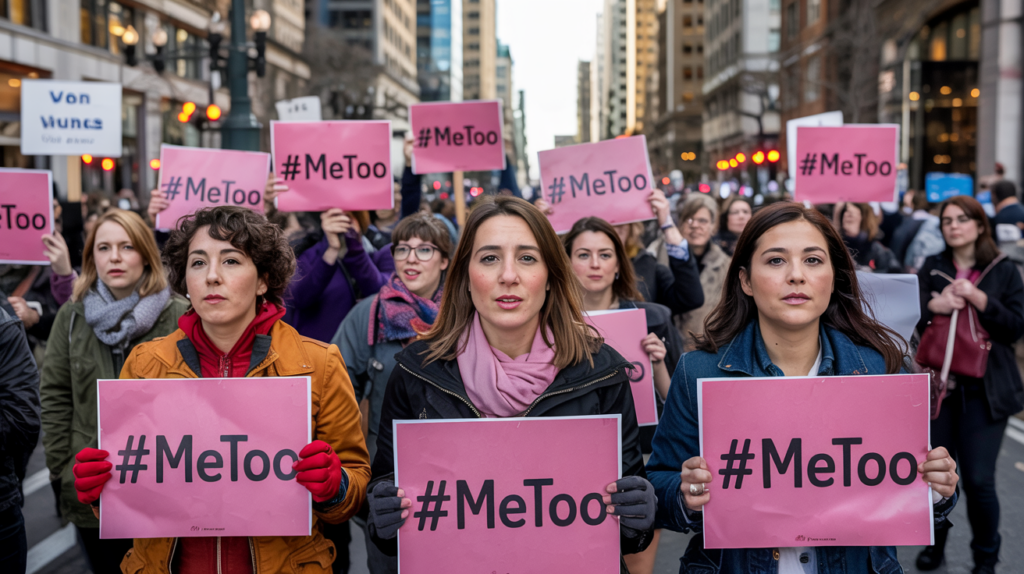
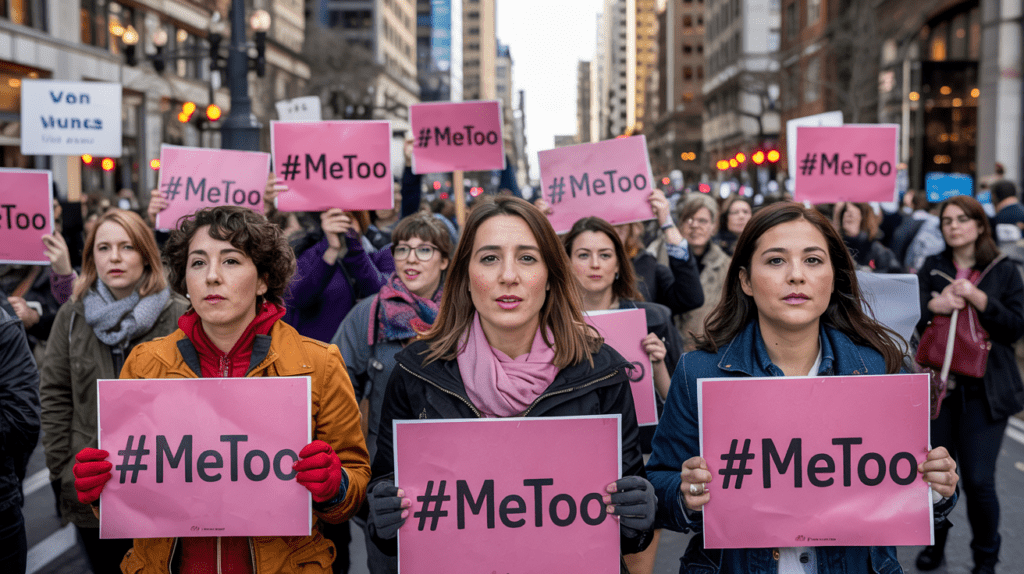
2020 – A Tumultuous Year (Pandemic, Protests, and an Election)
- March 2020: The COVID-19 pandemic grips the world, and Twitter becomes an information lifeline – as well as a hotbed of misinformation and haven to the anti-vax crowd. Twitter takes an aggressive stance on COVID-19 misinformation: it bans tweets that could lead to harm (e.g. false “cures”), labels misleading COVID tweets, and partners with health authorities to promote factual information. In May, Twitter makes the notable decision to allow employees to work from home permanently given the success of remote work during lockdowns, setting a trend in Silicon Valley.
- May 2020: For the first time, Twitter fact-checks tweets by President Trump. On May 26, Trump tweets unsubstantiated claims that mail-in voting is fraught with fraud; Twitter appends a label “Get the facts about mail-in ballots” linking to credible information (Twitter Places Fact-Checking Warning On Trump Tweet For 1st Time). This sparks a firestorm in which Trump accuses Twitter of bias and, on May 28, signs an executive order targeting social media companies’ legal protections (a largely symbolic move) (Trump targets social media with executive order after Twitter fact …). Then on May 29, amid protests over George Floyd’s killing, Trump tweets “when the looting starts, the shooting starts” — a phrase long associated with white supremacist crackdowns on Black protestors since the era of civil rights. Twitter hides this tweet behind a warning for “glorifying violence” (Twitter Hides Trump’s Tweet About Minneapolis, Saying It Glorifies …), allowing users to read it only after seeing the notice. These actions mark a turning point: Twitter is willing to enforce its policies on even the U.S. President. They also foreshadow the deeper moderation decisions to come. Trump and allies rail against Twitter, claiming it censors conservatives, while others praise Twitter for finally reining in rule-breaking by powerful figures.
- June 2020: Black Lives Matter protests sweep the U.S. and world after the murder of George Floyd. Twitter again serves as an amplifier for the movement – millions of tweets, viral videos of protests and police actions, and hashtags (#BlackLivesMatter, #DefundThePolice) dominate the platform. Twitter adds a special BLM hashtag emoji in solidarity. The platform also sees organized misinformation campaigns attempting to discredit the protests, which Twitter works to take down. Internally, Dorsey donates to racial justice causes and Twitter declares Juneteenth a company holiday. The intense usage during this time shows Twitter’s dual role as a tool for activism and a battleground for competing narratives.
- July 15, 2020: Twitter suffers an unprecedented security breach. Hackers socially engineer their way into Twitter’s admin tools and compromise dozens of top accounts – including those of Barack Obama, Elon Musk, Kanye West, and major companies – to post a cryptocurrency scam (“send Bitcoin, get double back”). The scam tweets are up for only minutes, but the incident is alarming. It reveals weaknesses in Twitter’s internal controls; in response, Twitter temporarily locks down verified accounts from tweeting and launches a forensic investigation. The breach, which resulted in about $120,000 stolen, leads to arrests of several young hackers. More importantly, it raises the question: what if the hackers had tweeted something geopolitically incendiary from a world leader’s account? Twitter commits to overhauling its security, including stricter access to admin panels, and later implements hardware security keys for employees. The “Crypto scam hack” stands as one of Twitter’s most embarrassing moments, happening in a critical election year.
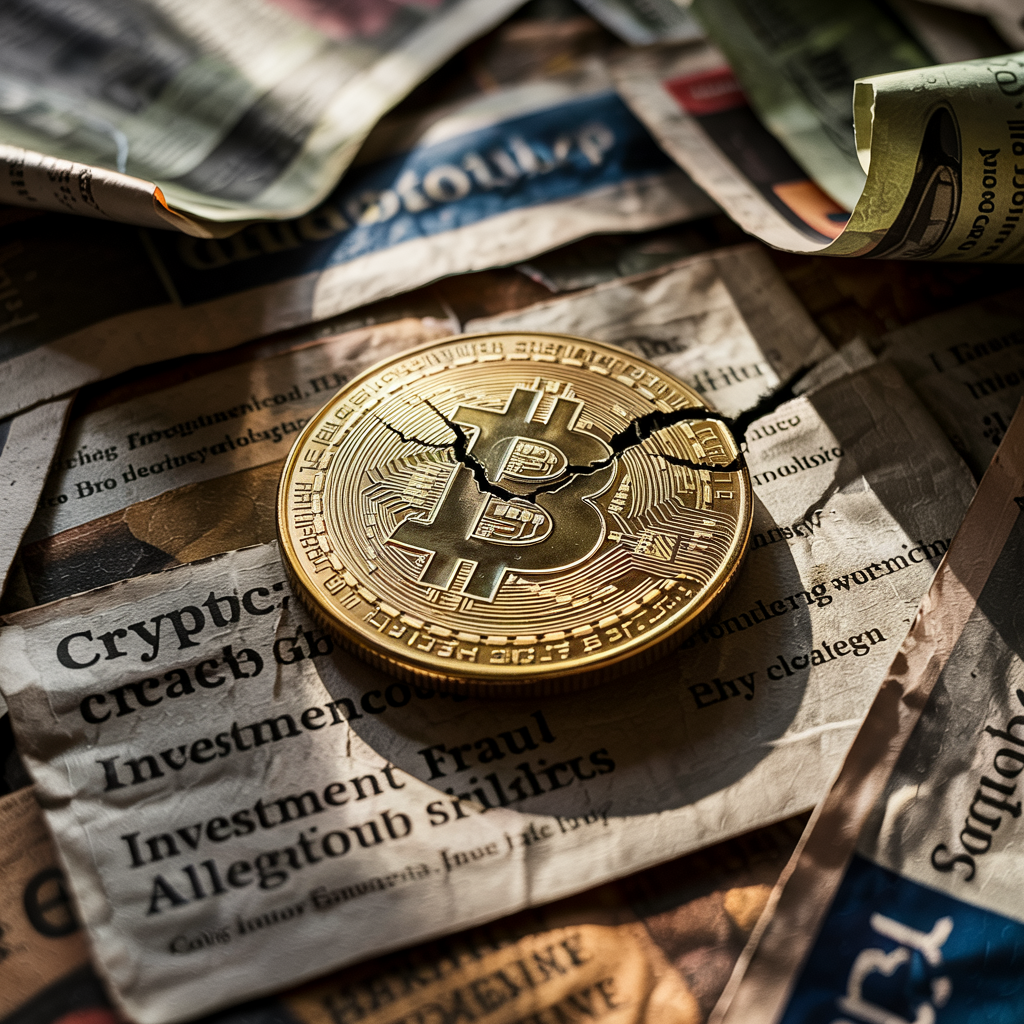
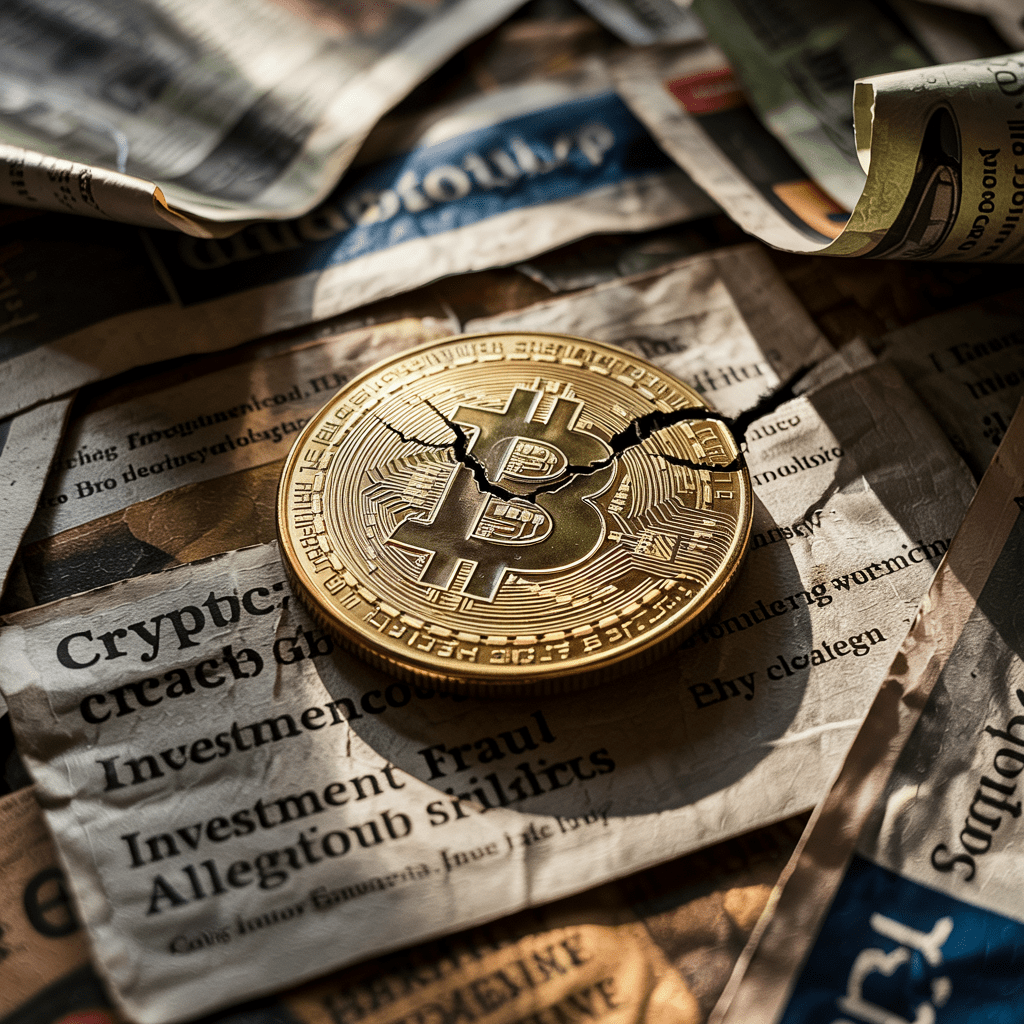
- September 2020: With the U.S. presidential election approaching, Twitter intensifies efforts against election misinformation. It updates its Civic Integrity Policy to address false or misleading claims about civic processes and begins labeling or removing false claims about voting (like wrong election dates or false claims of fraud), as well as launching an election hub to battle election disinformation. In October, Twitter announces it won’t allow any tweets – even from candidates – calling an election early or inciting election-related conflict, and launches “pre-bunks” for the first time in an attempt to get ahead of election-related misinformation.
- October 2020: A controversy erupts that later becomes a cause célèbre for Twitter’s critics. On October 14, the New York Post publishes a story about Hunter Biden (Joe Biden’s son) allegedly based on material from a laptop. Citing its “hacked materials” policy, Twitter blocks users from sharing links to the article or images from it, marking them as potentially harmful (Facebook and Twitter restrict controversial New York Post story on Joe Biden | Facebook | The Guardian). This “unprecedented” step of blocking a news story from a major outlet triggers immediate backlash from Republicans who accuse Twitter of censoring a story that could hurt Democrats in the final weeks of the election. Within 48 hours, Twitter reverses course: CEO Jack Dorsey admits the lack of context was a mistake and the company updates its policy to no longer remove hacked content unless shared directly by hackers. But the damage is done – this incident becomes a talking point about alleged anti-conservative bias, and a year later Elon Musk would cite it as a prime example of Twitter’s “free speech suppression.” Nevertheless, Twitter’s intent was to prevent the spread of potentially hacked or unverified material (later investigations would confirm the laptop had belonged to Hunter Biden, but did not contain evidence of any wrongdoing).
- November 2020: The U.S. presidential election sees massive activity on Twitter. As results come in slowly (due to mail-in ballots), misinformation about “voter fraud” spreads. Twitter aggressively labels false or premature claims – including dozens of Trump’s tweets. On election night and the days after, Twitter labels an unprecedented number of tweets, and for a brief period even restricts the ability to retweet or share content that violates certain rules (users are prompted to Quote Tweet instead, to add context). Despite these measures, Twitter becomes a hub for the “Stop the Steal” narrative among Trump’s supporters. Internally, Twitter debates and plans for a possible scenario where Trump might use Twitter to dispute the result or incite unrest. The company forms a special task force to handle any such crisis. By mid-November, as Joe Biden is projected the winner, Twitter had labeled around 300,000 tweets related to the election as potentially misleading.
- Also this month, Twitter introduces Fleets, its version of ephemeral Stories (tweets that disappear after 24 hours). This is an attempt to capture the Stories trend popularized by Instagram and Snapchat, giving users a way to share casual, momentary thoughts. Despite some initial interest, Fleets fails to significantly increase engagement and was retired in 2021.
- December 2020: Twitter announces Spaces (audio chat rooms similar to Clubhouse) in beta to a small group – a feature that will officially launch platform-wide in 2021. These feature experiments show Twitter trying to diversify how users post content.
January 2021 – The Capitol Riot and a Turning Point
- January 6, 2021: The U.S. Capitol is attacked by a pro-Trump mob attempting to overturn the election results. On Twitter, rioters openly planned and documented the siege, and many election deniers pointed to Trump’s own tweets (including a tweet that day calling the protesters “great patriots”) as encouragement. In the midst of the violence, Twitter temporarily locks President Trump’s account for 12 hours on Jan 6, removing tweets that praised the rioters, and issues a warning that future violations could result in a permanent ban.


- January 8, 2021: After Trump tweets twice more – defending his actions and saying he won’t attend the inauguration – Twitter’s trust and safety team, assessing these in the context of chatter about future violence, makes a historic decision: Twitter permanently suspends @realDonaldTrump “due to the risk of further incitement of violence” (Twitter permanently suspends Trump’s account, cites ‘incitement of violence’ risk | Reuters). This bans the sitting President of the United States from Twitter, his primary communication channel to the world. Twitter cites its policy that glorification of violence will not be tolerated and notes that Trump’s tweets (and how they were being received) posed a clear and present danger. It is an unprecedented action – Twitter had never before banned a head of state. The decision is praised by many who felt Trump used the platform to foment unrest, but it also intensifies accusations (especially from the right wing) that tech companies are “censoring” conservative or political speech. This moment dramatically illustrates the power and responsibility of platforms like Twitter in moderating leaders. Marking the event’s gravity, Jack Dorsey later says he takes no pride in banning Trump but stands by it as the right decision for public safety. Other tech platforms (Facebook, YouTube) soon follow with their own bans or suspensions of Trump.
- January 2021 (post-ban): Twitter also moves against accounts related to the QAnon conspiracy that fueled Capitol unrest. By January 12, it had suspended over 70,000 QAnon accounts that were spreading dangerous content (Twitter blocks 70000 QAnon accounts after US Capitol riot – AP News). Among these were Trump allies like Michael Flynn and Sidney Powell. The purges lead to an immediate drop in misinformation trending topics on Twitter. However, they also drive many of Trump’s followers to alternative platforms (Parler, Gab), reflecting a fragmentation of the social media ecosystem along ideological lines.
- February 2021: A showdown in India tests Twitter’s commitment to free expression. Ongoing farmer protests in India gain huge traction on Twitter (with hashtags trending globally). The Indian government demands Twitter block over 1,000 accounts, including those of journalists and activists, citing provocative content. Twitter initially complies with blocking some accounts within India (Twitter suspends hundreds of Indian accounts after government …), but then refuses to ban dozens of journalists, activists, and opposition politicians’ accounts. Twitter publicly voices concern over freedom of expression and the safety of its staff, effectively pushing back on the Modi government (Twitter concerned for staff in India after row over account removals). In response, India’s government threatens Twitter executives with legal consequences. This standoff in one of Twitter’s largest markets highlights the conflict between authoritarian legal demands and Twitter’s values. Eventually, Twitter and the government reach an uneasy middle ground – some accounts remain blocked in India, others restored. The incident foreshadows increasing pressure on Twitter by governments worldwide to censor content (pressure that later owners might handle differently).
- Also in early 2021, Twitter acquires the newsletter platform Revue (January 2021) to integrate long-form content and begins rolling out “Super Follows” and Tip Jar (allowing users to subscribe or tip certain creators) as part of a strategy to court creators and diversify revenue beyond ads. These moves show Twitter trying to expand creator monetization on the platform.
- May 2021: Twitter officially launches Spaces (audio rooms) to all users, jumping into the live audio trend accelerated by Clubhouse. Spaces soon hosts everything from celebrity chats to grassroots discussions, and becomes an important feature (one Elon Musk would use prominently in 2023).
- June 2021: Twitter introduces its first subscription service, Twitter Blue. For a monthly fee, users get perks like an “undo tweet” timer, bookmark folders, and ad-free news articles. This marks Twitter’s initial dip into subscription revenue, which will later become a centerpiece of Musk’s strategy.
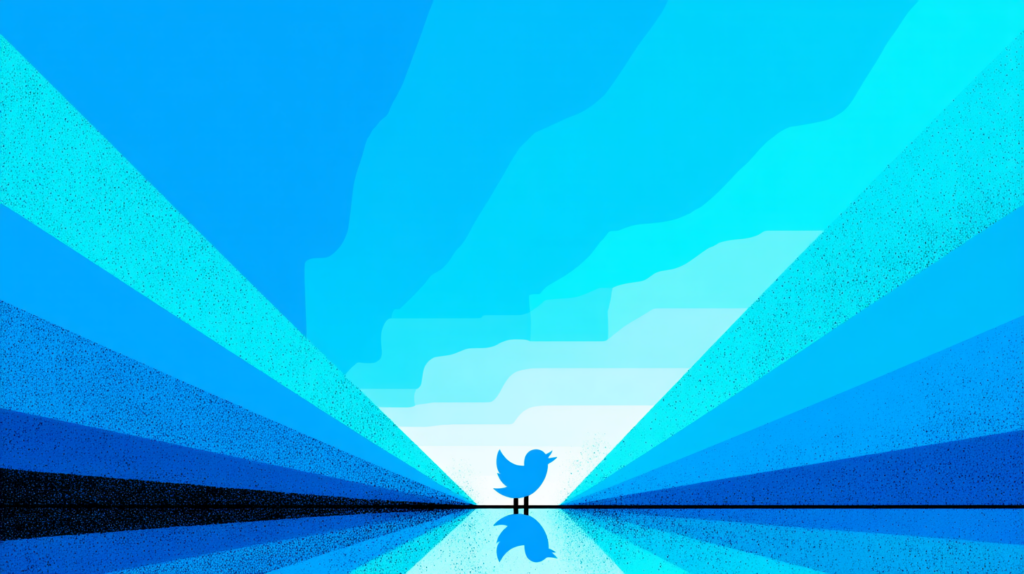
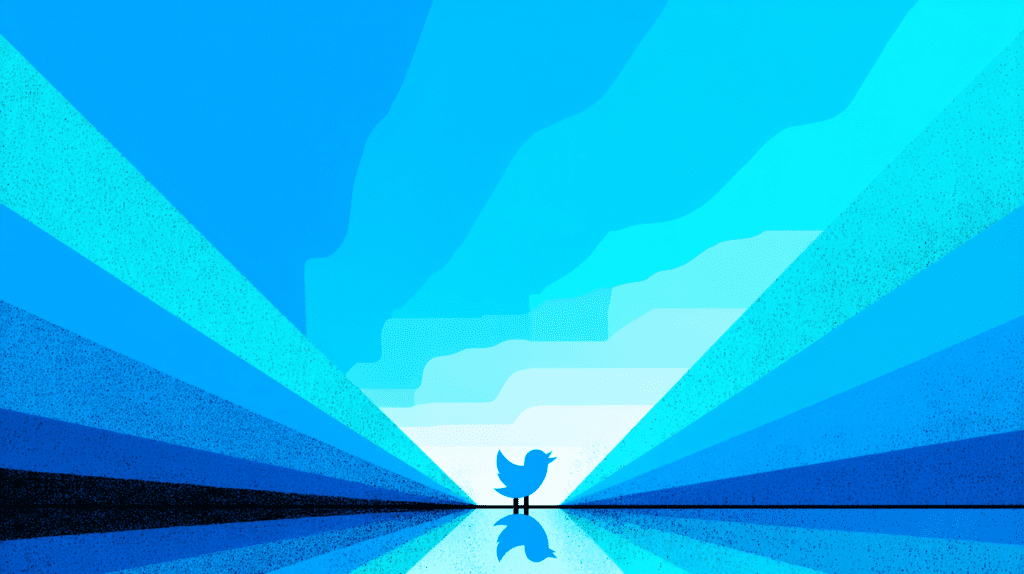
- June 2021: Having promised to double Twitter’s features and user base by 2023, Jack Dorsey oversees the release of a flurry of new features. However, one experiment – Fleets (stories) – hasn’t gained traction. In July 2021, Twitter announces it will shut down Fleets on August 3, 2021 due to low usage, acknowledging that it failed to “address the anxieties” that kept people from tweeting. The end of Fleets shows Twitter’s willingness to pivot when a feature flops. Meanwhile, the company’s focus on healthy conversation continues: Twitter begins prompting users to reconsider harmful replies (successfully reducing some nasty tweets), and it tests a feature to allow users to “unmention” themselves from threads to escape harassment.
- November 29, 2021: Another leadership shock – Jack Dorsey resigns as CEO (for the second time) and leaves the company’s helm (Twitter CEO Jack Dorsey hands reins to technology chief Agrawal | Reuters). Twitter’s CTO Parag Agrawal is appointed the new CEO effective immediately. Dorsey says the company is “ready to move on from its founders” (Jack Dorsey steps down as Twitter CEO; Parag Agrawal succeeds him), expressing confidence in Parag and the team’s ambitious 2023 goals. Parag Agrawal, a decade-long Twitter veteran and engineer, inherits a slew of challenges: stagnant user growth, continued moderation concerns, and activist shareholders pushing for changes. Concurrently, Bret Taylor of Salesforce becomes Twitter’s board chairman, as part of an agreement with activist investor Elliott Management (which in early 2020 had pressured Twitter for executive changes). Dorsey’s departure marks the end of an era – none of Twitter’s founders are now involved in day-to-day operations. Little did anyone know, this leadership change set the stage for an even more dramatic takeover within a year.
2022 – The Musk Takeover Saga
- January 2022: Under new CEO Parag Agrawal, Twitter initiates a major reorganization, consolidating divisions and cutting some projects. Agrawal emphasizes “operational rigor” and begins implementing the 2023 plan set earlier (aiming for 315 million DAUs and an aggressive $7.5B in revenue in 2023). Behind the scenes, Twitter also prepares to introduce an edit button (Twitter confirms in April it’s working on one, after years of user requests). Twitter’s stock, however, languishes in the high $30s – a target for a potential acquirer.
- March 2022: Elon Musk, the billionaire CEO of Tesla and SpaceX and a longtime active Twitter user with 80+ million followers, starts criticizing Twitter openly. He polls his followers on March 25 asking if Twitter adheres to free speech principles, hinting that he might consider building a new platform. Unbeknownst to the public, Musk has also been quietly buying Twitter shares since January.
- April 4, 2022: In a bombshell disclosure, Musk reveals that he has accumulated a 9.2% stake in Twitter. This makes him the biggest shareholder of Twitter, Inc. The news sends Twitter’s stock surging and sets off a chain of events that will dominate 2022. Initially, Twitter’s CEO Parag and the board invite Musk to join the board, and on April 5, Parag announces Musk will indeed join and that the company will work with him “to make Twitter better.” However, on April 9 – just before his appointment would become official – Musk declines the board seat, a surprise move Parag Agrawal reveals on April 11. Declining the board frees Musk from a standstill agreement (as a board member he’d be capped at ~15% ownership). It soon becomes clear why Musk did this.


- April 14, 2022: Elon Musk makes a dramatic offer: he proposes to buy Twitter outright for $43 billion (at $54.20 per share) and take it private. Musk frames this as a bid to protect free speech, saying Twitter needs to be transformed into a private company to unlock its potential as “the platform for free speech around the globe”. He famously says this isn’t about economics but about “the future of civilization” needing a “maximally trusted” public square (How Elon Musk uses his X social media platform to amplify right-wing views | PBS News). Twitter’s board initially enacts a poison pill (April 15) to prevent a hostile takeover, but Musk lines up financing (including $12.5B leveraged against his Tesla stock and $13B in bank loans). After some drama and negotiations, on April 25, 2022, Twitter’s board accepts Musk’s offer to buy the company at $54.20/share (Timeline of Twitter – Wikipedia). The deal, valued at $44 billion, is one of the largest leveraged buyouts of a tech company. Musk outlines some plans – defeating spam bots, open-sourcing the algorithm, and championing free speech – but offers scant detail. Many employees and users are shocked; an air of uncertainty envelops Twitter. Notably, Musk’s deal includes a $1 billion breakup fee on either side if either Musk or Twitter backs out.
- May–July 2022: A will-they-won’t-they saga unfolds as Elon Musk appears to get cold feet. In May, Musk declares the deal “on hold” due to concerns about the prevalence of fake/spam accounts on Twitter, claiming Twitter underreported bots. He demands proof that spam bots are <5% of users (Twitter’s long-stated estimate). Twitter provides Musk access to its “firehose” of tweets, but by June Musk is openly suggesting Twitter misled him – an indication he might want to exit or renegotiate. Behind the scenes, the tech market collapses (social media stocks plunge, Tesla’s stock (vital for Musk’s financing) falls sharply), making the $54.20 price look very rich. On July 8, 2022, Musk moves to terminate the deal, accusing Twitter of breach of contract for not providing sufficient spam data. Twitter’s board, led by Chairman Bret Taylor, stands firm that Musk must honor the agreement. On July 12, Twitter files a lawsuit in Delaware Chancery Court to force Musk to close the purchase, calling his bot excuse a pretext and highlighting Musk’s own texts showing buyer’s remorse. The case is fast-tracked for trial in October. The legal drama is intense: discovery reveals some embarrassing Musk texts, and legal analysts largely view Twitter’s case as strong (Delaware courts rarely let buyers walk from signed deals absent egregious issues).
- October 2022: Facing a likely courtroom defeat, Musk capitulates. On October 4, 2022, Musk reverses course and offers to close the deal on the original terms. The judge stays the trial, giving an Oct. 28 deadline to close. In those weeks, Musk outlines grandiose ideas (talk of turning Twitter into “X, the everything app”) and visits Twitter’s HQ (famously carrying a sink on Oct. 26, tweeting “let that sink in!”). Finally, on October 27, 2022, Elon Musk completes the acquisition of Twitter for $44 billion – taking the company private under his ownership. He tweets “the bird is freed.” Musk immediately dissolves Twitter’s board and fires top executives (CEO Parag Agrawal, CFO Ned Segal, General Counsel Sean Edgett, and Head of Legal Policy Vijaya Gadde are all dismissed on day one). Musk becomes de facto CEO (though he initially styles himself “Chief Twit”), and installs allies and venture partners as new leadership. Thus begins the Musk era of Twitter – characterized by swift and controversial changes.


Late 2022 – Musk’s Twitter: “Hardcore” Changes and Chaos
- November 2022: Elon Musk wastes no time remaking Twitter. On November 4, he slashes the workforce by roughly 50% (around 3,700 employees) in mass layoffs, asserting that Twitter must cut costs fast (the company had been losing money and now has to service debt from the buyout). Entire teams, including many involved in moderation, communications, and ethical AI, are gutted. The sudden cuts (via email) draw criticism for their bluntness and concerns about site stability and safety oversight. Musk also quickly sets a “hardcore” work culture: he demands long hours and a scrappy engineering-focused approach, later issuing an ultimatum that remaining employees commit to an “extremely hardcore” Twitter or leave. This leads to another wave of resignations in mid-November. By late 2022, Twitter’s headcount is down to ~2,500 from 7,500 at start of the year.
- Parallel to restructuring, Musk begins reversing many of Twitter’s prior content moderation decisions and policies:
- “Free Speech” Approach: Musk, who describes himself as a “free speech absolutist” (within legal limits), criticizes Twitter’s former moderation as too restrictive. In November 2022 he restores numerous accounts that were previously banned for violating policies – including controversial figures like Jordan Peterson and the Babylon Bee. On November 19, after conducting a Twitter poll, Musk reinstates former President Donald Trump’s account (which had been banned since Jan 8, 2021). Trump, however, does not resume tweeting (being tied up with his own Truth Social platform). Musk also announces a planned “general amnesty” for suspended accounts (except those that broke laws or spammed egregiously). These actions thrill some free-speech advocates but alarm others who fear a rise in harassment and misinformation. Indeed, researchers observe a persistent spike in hate speech in the weeks after Musk’s takeover – slurs and racist, homophobic, and transphobic tweets increase significantly (on the order of +50% by some measures) (Study finds persistent spike in hate speech on X – Berkeley News). Musk disputes such findings, but multiple studies (later including one in the academic journal PLOS ONE) confirm that hate speech became more prevalent under his lax moderation regime and that contentious users saw their tweets boosted more often.
- Policy Rollbacks: Musk’s Twitter halts enforcement of certain rules. In late November, it quietly drops Twitter’s COVID-19 misinformation policy (so tweets containing COVID falsehoods are no longer removed) – an example of Musk’s skepticism toward what he calls “censorship” in the guise of science. Musk also dissolves Twitter’s Trust & Safety Council in December and cuts ties with some outside advisory groups. Internally, he makes content moderation decisions with a small team, at times polling Twitter users for input. This free-wheeling approach leads to whiplash policy changes: e.g., after an incident in December where an account tracking Musk’s private jet (@ElonJet) is suspended, Twitter suddenly implements (then retracts) a policy against sharing live location info. Musk also briefly bans several journalists who reported on the jet tracker story (causing an outcry from news organizations) before reinstating them after polling users. These incidents draw condemnation from politicians and even the UN for imperiling press freedom – ironic given Musk’s stated free speech goals.


- Verification Overhaul: One of Musk’s first product moves is to revamp Twitter’s verification system. On November 9, Twitter launches Twitter Blue subscriptions for $7.99/month that give any paying user a blue checkmark (previously reserved for verified notable accounts). This “paid blue check” scheme immediately backfires – within days, Twitter is flooded with impersonation accounts bearing blue checks (since the check no longer signifies identity verification). Notorious examples include a fake “Eli Lilly” account tweeting “insulin is free” (causing the real company’s stock to drop) and fake accounts of politicians and brands sowing chaos. After two days, Twitter suspends the Blue rollout. Musk’s team then retools the system: they introduce different colored checkmarks (gold for businesses, gray for government, blue for individuals) and require a review before granting the check. Paid verification relaunches in December in a more stable form, but the episode dents advertisers’ trust. By April 2023, Musk’s Twitter will fully remove “legacy” blue checks (those verified under the old system) – a contentious change that spurs further impersonation risks and pushback from prominent users.
- Advertising Fallout: Musk’s chaotic changes and the spike in hate speech spook Twitter’s major advertisers. In the first weeks of November hundreds of advertisers pause spending on Twitter, concerned about brand safety and Musk’s own erratic tweets. Major brands like General Mills, Pfizer, Volkswagen, and Disney halt campaigns. Musk reveals Twitter is seeing a “massive drop in revenue” and blames “activist groups pressuring advertisers”. By late November, an estimated half of Twitter’s top 100 advertisers have stopped ads, and ad revenue in December falls over 70% year-on-year (Twitter, Inc. – Wikipedia). Musk’s team tries to reassure advertisers with varying success. This advertiser exodus puts immediate financial strain on Twitter, which was already heavily indebted from the buyout. Musk responds by cutting more costs and hastily trying to generate subscription revenue (Twitter Blue, etc.). Twitter’s relationship with advertisers remains fraught under Musk, who at times publicly feuds with brands or ad agencies.
- “Twitter Files”: In December 2022, Musk authorizes several independent journalists (including Matt Taibbi and Bari Weiss) to publish internal company documents and Slack messages from before his tenure, dubbing them the “Twitter Files.” Released in threads on Twitter throughout December, these files aim to reveal alleged past censorship and bias – covering topics like Twitter’s decision to block the 2020 NY Post/Hunter Biden story, the internal debate over banning Trump after Jan 6, and visibility filtering tools used on some accounts. While the Twitter Files show employees grappling with difficult moderation calls, they did not reveal evidence of government manipulation beyond legal requests. Nonetheless, Musk frames the Twitter Files as exposing collusion between Twitter’s prior management and government officials or partisan actors to suppress speech (How Elon Musk uses his X social media platform to amplify right-wing views | PBS News). These claims energize conservatives who long believed Twitter had an inherent left-wing bias. For example, Musk irresponsibly calls former trust and safety head Yoel Roth (who quit in November) a possible criminal (leading to death threats) and suggests the FBI improperly influenced Twitter – claims later shown to distort the context. The Twitter Files series is polarizing: supporters see transparency, critics call it a selectively framed narrative. Importantly, it further erodes trust between Musk’s Twitter and institutions like news media, some of whom Musk taunts as “media elites.” Musk also restores accounts of some figures mentioned in the Files. By year’s end, Musk has dramatically steered Twitter to align more with right-wing and “anti-establishment” voices, touting the platform as a place where previously “censored” speech is welcome. This shift is noticed widely – The Guardian writes that Twitter under Musk has turned into a site where extremists have free rein and moderation has dwindled, asking “why are liberals still on it?” (Twitter’s rightwing takeover is complete. Why are liberals still on it?).


2023 – Twitter Transforms into “X”
- January 2023: Twitter enters the new year as a smaller, Musk-run company facing big financial pressures. To cut costs further, Twitter closes several international offices and stops enforcing many legacy policies. It also bans third-party apps (like Tweetbot and Twitterrific) by revoking their API access without warning – effectively killing the third-party Twitter client ecosystem that had existed for over a decade. On Jan 12, Twitter quietly updates its developer terms to forbid alternative clients, pushing users to the official app and saving server costs. Developers and long-time users are dismayed, viewing it as the end of an era of the open Twitter API.
- February 2023: Under Musk, Twitter seeks new revenue streams. It introduces a costly tiered API access plan, ending free API access for researchers and hobbyists. This move, while bringing in some revenue, alienates academic researchers who relied on Twitter data to study trends (e.g., hate speech tracking). Meanwhile, Twitter’s core users notice more quirks: outages and glitches become more common (e.g. images failing to load, tweet replies mis-ordering) as the skeleton staff struggles with maintenance. Musk also initiates a major auction of office furniture and memorabilia from the San Francisco HQ to monetize even quirky assets (neon bird signs, espresso machines), a spectacle that underscores Twitter’s austere new regime.
- March 2023: In line with Musk’s push for transparency, Twitter finally open-sources portions of its algorithm that determine tweet visibility (posting code to GitHub on March 31). Developers pour over the code and find nothing flagrantly nefarious, though they do discover oddities (e.g., a label seemingly boosting tweets from “power users” like Musk himself, which Twitter then removes). Musk frames the open-sourcing as a step to be “as transparent as possible” about how Twitter recommends content. Critics note this transparency is partial (key machine-learning models were omitted), but it’s a notable move – no major social media had ever shared its ranking code before. Also in March, Twitter starts winding down legacy features like free text two-factor authentication (pushing users to either subscribe to Blue for SMS 2FA or use authenticator apps). Twitter is cutting anything that isn’t cost-effective.
- April 2023: Perhaps the biggest symbolic change of the Musk era arrives – Twitter, Inc. merges into X Corp, an entity Musk set up in Nevada (Timeline of Twitter – Wikipedia). This is part of Musk’s vision to eventually morph Twitter into “X, the everything app” (akin to China’s WeChat). Legally, Twitter, Inc. ceases to exist; the company is now known as X Corp, though the service is still called Twitter… for now. In early April, Musk causes a stir by temporarily changing Twitter’s iconic blue bird logo to the “Doge” meme dog (an inside joke referencing a cryptocurrency), but it switches back after a few days. More seriously, in April Twitter ends the legacy verification program – on April 20, it removes the blue check marks from all previously verified accounts that haven’t paid for Twitter Blue. This means journalists, activists, and celebrities lose badges, leading to impersonation concerns. (Musk personally paid for a few celebrity Blue subscriptions to troll them.) The verification shakeup prompts some government agencies and public figures to create alternate indicators of authenticity, as the trust factor of Twitter profiles erodes.
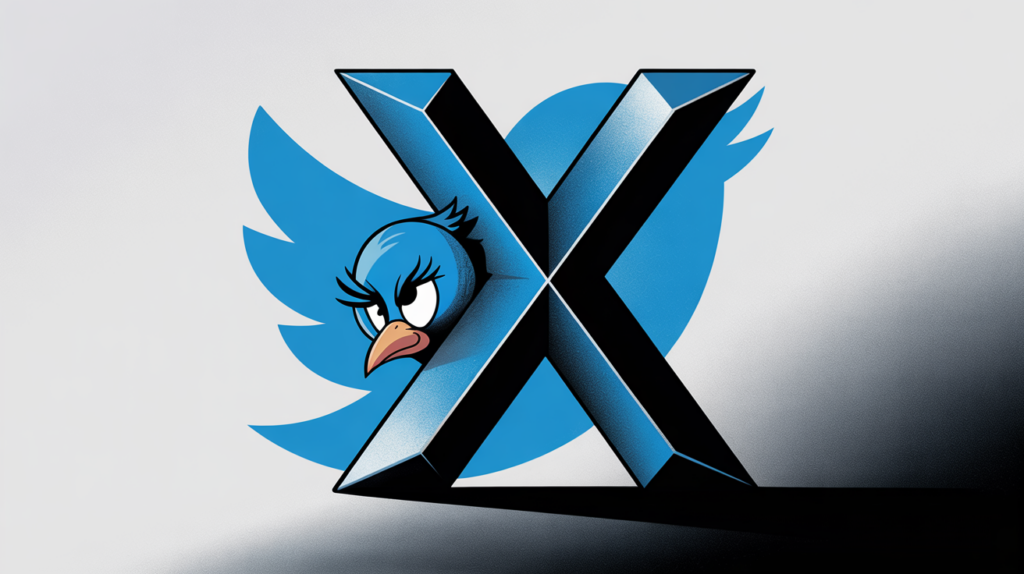
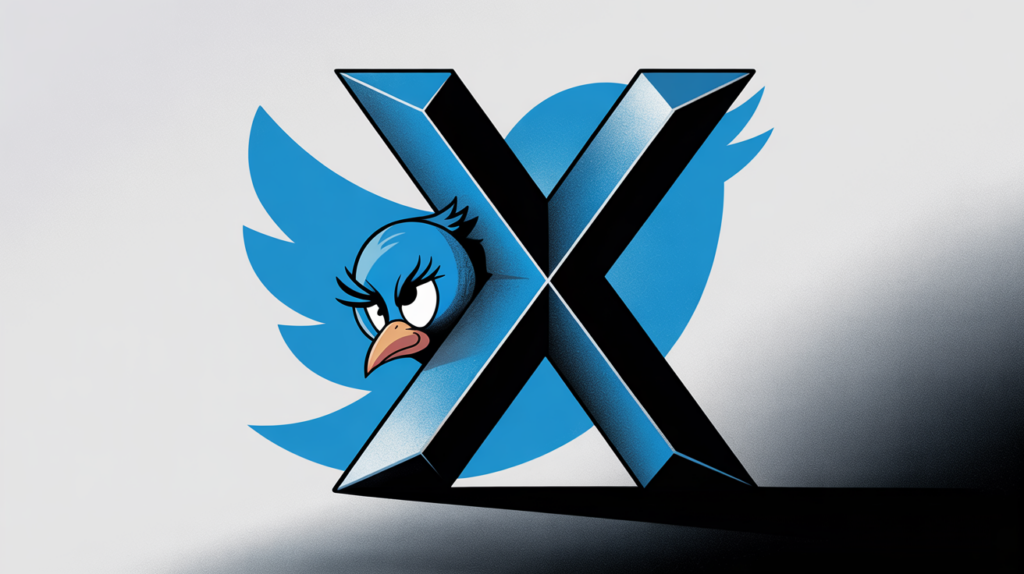
- April 2023 (Media Labels Conflict): A major controversy erupts between Twitter and prominent news organizations. On April 4, Twitter suddenly labels NPR (National Public Radio) as “US state-affiliated media,” lumping it with government propaganda outlets like Russia’s RT – despite Twitter’s own policy exempting independent public broadcasters. After backlash, Musk changes it to “government-funded media,” but NPR decries the misleading label (less than 1% of its funding is government). Similarly, Twitter tags the BBC and PBS with “publicly funded” labels. NPR and PBS respond by quitting Twitter entirely in mid-April, the first major media outlets to do so, saying the label undermined their credibility. Musk’s move draws accusations of political bias – it appeared to target outlets that had been criticized by U.S. conservatives. Even Twitter’s Trust & Safety team was reportedly caught off guard. This incident feeds the narrative that under Musk, Twitter is taking a more right-wing, anti-mainstream-media stance (Twitter, Inc. – Wikipedia). Musk later removes the labels entirely from media accounts, but by then relationships with some news orgs are badly damaged.
- May 2023: Twitter sees a notable live event on May 24 – Florida Governor Ron DeSantis announces his presidential run on Twitter Spaces, in conversation with Elon Musk. The event draws hundreds of thousands of listeners but is marred by technical glitches (the Spaces session crashed repeatedly under the load). While the launch was shaky, it “underscored the platform’s unmistakable shift to the right under Musk”, as the Associated Press wrote (Twitter’s launch of DeSantis’ presidential bid underscores platform’s rightward shift under Musk | AP News). Twitter had never before been the venue for a major presidential campaign announcement. The choice signaled that Republican candidates saw Musk’s Twitter as a friendly forum – a striking change from prior years. Indeed, Musk has been increasingly vocal politically, aligning with right-wing views (he encouraged Americans to vote Republican in the 2022 midterms). After the DeSantis event, observers noted Twitter’s evolution: from a somewhat liberal Silicon Valley company to an avowed “free speech” platform courting right-wing figures. Musk himself stated he would support DeSantis if he ran. Around the same time, Twitter ended its COVID-19 misinformation labels entirely and began readmitting some anti-vaccine accounts. These moves further solidified the perception of Twitter’s rightward shift in content and tone.
- May 12, 2023: In a surprise announcement, Elon Musk says he will step down as CEO, and he hires Linda Yaccarino, NBCUniversal’s respected head of advertising, as the new CEO of Twitter (to start in June). Yaccarino, with deep ties to Madison Avenue, is tasked with winning back advertisers and stabilizing the business. Musk confirms he will transition to executive chairman and CTO, still controlling product decisions. This leadership change is seen as Musk acknowledging that ad clients need smoother relations – though Musk continues to be Twitter’s public face (often undermining any charm offensive Yaccarino might attempt). By this time, Twitter’s finances are dire: Musk admitted in March that the company was roughly at break-even after drastic cost cuts, but ad revenue remained 50% or more down from a year prior. Musk also revealed Twitter was valued by a private stock grant at ~$20 billion (less than half what he paid).
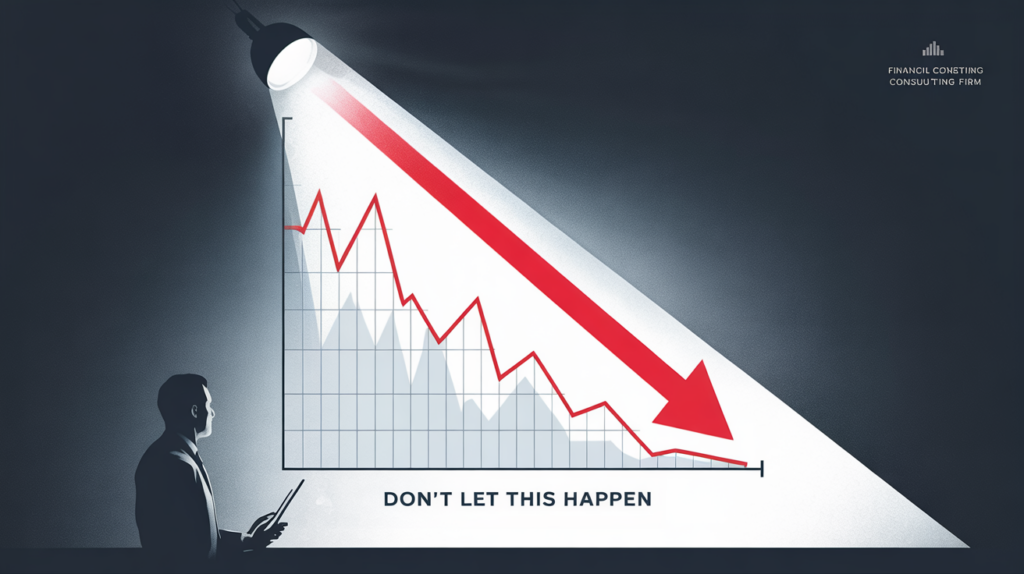
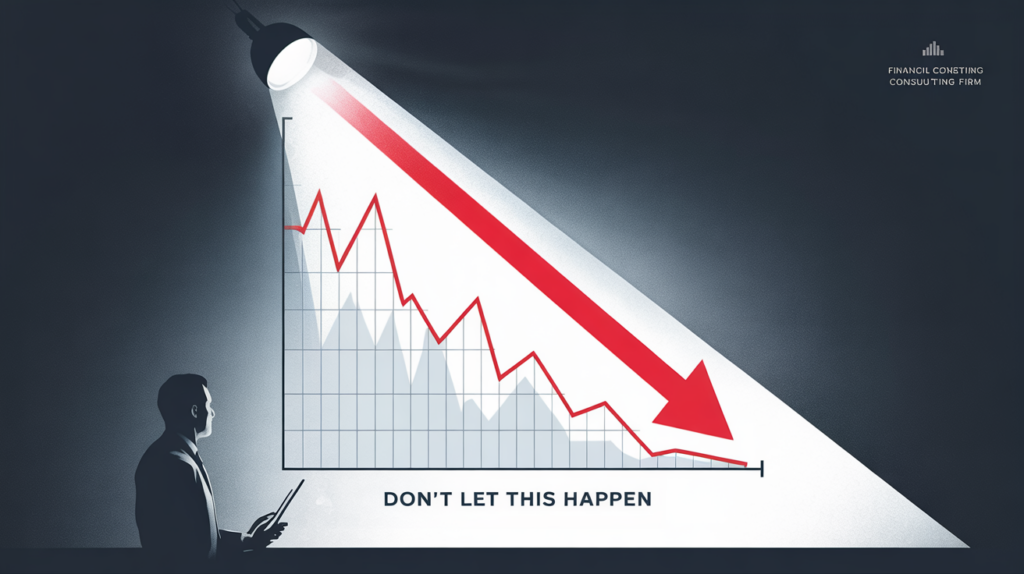
- Late June 2023: Twitter imposes drastic limits on usage in what Musk calls an attempt to stop data scraping. On June 30, Twitter blocks unregistered users from viewing tweets and profiles entirely, forcing a login to use the service. Then on July 1, Musk suddenly sets logged-in users to temporary rate limits (initially 600 tweets/day for unverified users, later adjusted). Many users for a weekend saw “Rate limit exceeded” errors, rendering Twitter practically unusable for a time. Musk explained it as a measure to prevent AI companies from scraping Twitter data en masse, but critics argued it was a hasty move that punished regular users and might drive them away. These rate limits were gradually relaxed, but not before #TwitterDown trended and rival platforms gained attention.
- July 2023 – Twitter Becomes X: Musk makes a dramatic branding decision. In mid-July, he signals that Twitter will rebrand as “X.” On July 23, 2023, Twitter’s famous blue bird logo is replaced with a black-and-white X logo across the site. The name “Twitter” begins to be phased out in interface text (tweets are sometimes called “posts” or “X’s”), and Musk encourages people to refer to the platform simply as “X.” This ends Twitter’s 17-year-old brand identity virtually overnight. Musk’s rationale: he has long wanted to build “X, the everything app” offering not just social networking but also payments, shopping, and more. The rebrand is met with mixed reactions – some die-hard users mourn the bird and the unique lexicon (tweets/retweets), while others are indifferent or curious. Legally, the company already became X Corp in April; now the product is catching up. In the weeks after, the terms “tweet” and “retweet” persist informally, but Musk pushes for “post” and “repost.” The URL remains twitter.com (for now), but Musk eventually redirects the web address X.com to Twitter. The rebrand is perhaps the clearest sign that the Twitter of old is gone, and Musk’s X is intended to be a different beast. Notably, the AP observes that with the rebrand, Musk has wiped away an iconic brand – potentially risky, but aligning with his vision to integrate more services (he hints at adding long-form articles, video, and even banking features to X).
- July 2023 (Competition): Around the same time, Meta (Facebook’s parent) launches Threads, a text-centric social app seen as a direct Twitter rival, that had been leaked back in June. Threads gains over 100 million sign-ups within five days of its July 5 debut, capitalizing on disaffected Twitter users amid Musk-era changes. Musk reacts combatively (threatening to sue Meta for copying and joking with Mark Zuckerberg about a cage fight). While Threads’ engagement later drops, its fast start underscores user appetite for a Twitter alternative. This is the first serious competitor Twitter has faced in years, and it emerged largely due to Musk’s controversial moves alienating some core users.
- August 2023: Twitter (now X) continues to roll out Musk’s product ideas. It rebrands Twitter Blue as “X Premium” and introduces new paid tiers. It also requires verification (paid) to use TweetDeck (now “X Pro”) as of August 15 – effectively monetizing a previously free tool beloved by power users and journalists. Minor but unpopular tweaks occur, like removing headlines from news article link cards (showing only the image and domain) to create what Musk calls a cleaner look. This change frustrates publishers, as posts from news sites become less informative at a glance. On the business side, Musk and Yaccarino tout new ad formats and the start of ad revenue sharing with creators (paid out to certain popular accounts, largely to incentivize influential users to create content on X). By late 2023, some users report receiving substantial payouts from X’s creator program – a stark shift from Twitter’s historically arm’s-length stance with creators. This is part of Musk’s attempt to keep content flowing and rewarding engagement (especially engagement that keeps the new right-wing user base active).


- October–November 2023: X faces intense criticism during the Israel–Hamas war for a surge of false information and lack of moderation. The EU sends Musk a formal warning that X is not complying with the new Digital Services Act’s disinformation rules. Musk feuds with critics and even with the Anti-Defamation League (blaming them for ad losses and briefly entertaining the #BanTheADL campaign promoted by far-right users). Tensions with advertisers reach a new peak in November 2023 when Musk himself engages with the overtly antisemitic conspiracy theory on X known as “Great Replacement Theory.” On Nov. 16, Musk replied “You have spoken the actual truth” to a user’s post accusing Jewish communities of pushing hatred against whites (Elon Musk boosts antisemitic tweet, claims ADL pushes ‘anti-white …). This draws immediate condemnation, including from the White House. In response, major advertisers like Apple, Disney, IBM, Comcast, and others swiftly suspend their ads on X. The ad freeze threatens tens of millions in revenue. Musk eventually apologizes (after initially doubling down and telling them to go eff themselves), and in an effort to do damage control, he visits Israel and meets with Israeli President Herzog at the end of November. Nonetheless, the incident underscores how Musk’s personal postings can directly harm X’s business interests. By the end of 2023, ad industry reports indicate X’s U.S. ad revenue is still down at least 50% from pre-Musk levels. Musk starts pivoting X’s strategy to focus more on subscriptions and new features to lessen reliance on advertising.
- December 2023: X experiences a significant outage on Dec. 21 that affects timeline loading for many users, one of the larger outages since Musk’s takeover. Engineers (many hired after Musk’s layoffs) work to stabilize the site’s code, which has undergone rapid changes with thinner staffing. Meanwhile, Musk and Yaccarino have press forwarding on new initiatives in the back half of the year: they launch beta tests of audio and video calls in X (without needing phone numbers) and an AI chatbot named “Grok” for Premium users. Musk also hints at wanting X to be a competitor in AI, integrating his new venture xAI. The vision of X is slowly taking shape as more than just a microblog – though skeptics remain doubtful that users want a one-stop app from the company that’s struggling with basics like consistent uptime and content moderation.


2024 – Present Day Developments
- January 2024: To the relief of journalists and media outlets, X restores headlines on link previews for articles, partially reversing the no-headline experiment. This suggests that even in the Musk era, some unpopular changes might be walked back if they don’t meet objectives. X also updates its policies to allow political advertising again in the U.S., reversing Twitter’s 2019 political ad ban. Under Musk, X argues that allowing “cause-based” ads and candidate ads (with some restrictions) aligns with free expression and that new safeguards will prevent the issues seen on other platforms. This move, quietly implemented in late 2023 and early 2024, is another sign of Musk’s different philosophy.
- Mid-2024: As the U.S. election heats up, X finds itself at the center of political discourse – but in a changed landscape. Musk’s endorsement of Republican candidates and X’s more permissive rules have made it a haven for right-wing commentary (even as some left-leaning users have departed for alternatives like Mastodon and Bluesky). Studies by watchdog groups and academics continue to document a rightward shift in the prominence of content on X. Additionally, engagement data indicate that right-wing influencers (many reinstated by Musk) have seen their follower counts and reach grow, while some voices on the left have seen declines – evidence that Musk’s changes (both algorithmic and in community) skewed the conversation. Analysts note that Musk’s own behavior – amplifying right-wing memes, interacting with extremist accounts – effectively sets the tone for X’s culture (How Elon Musk uses his X social media platform to amplify right-wing views | PBS News). In August 2024, an AP analysis described Musk as using X “to amplify right-wing views” and pointed out that this was “no surprise” given his early statements about free speech (How Elon Musk uses his X social media platform to amplify right-wing views | PBS News) (How Elon Musk uses his X social media platform to amplify right-wing views | PBS News). Musk defends himself, stating that he is anti-“woke” not strictly right-wing, and that X welcomes all perspectives.
- Late 2024: Leading up to and especially following the 2024 election, left-leaning accounts leave X in droves for other platforms, most notably Bluesky — the independent entity spun out of Twitter under Jack Dorsey. Elon Musk’s enthusiastic support of Donald Trump — to the tune of $290 million — and his seemingly open door policy to fascists on the platform make X even more of a pariah than it was before. Bluesky saw 1 million new members the week of the election, and had doubled its userbase in just 2 months by the end of November.
- February 2025: A study by researchers at USC and UC Berkeley confirms that hate speech on X remained significantly higher post-Musk than before (Study finds persistent spike in hate speech on X – Berkeley News), contradicting X’s claims that it reduced hate speech. They found weekly slur usage up ~50% since late 2022 (Study finds persistent spike in hate speech on X – Berkeley News).
- March 2025: X Corp makes a strategic move by merging with xAI, Musk’s artificial intelligence startup. This merger (completed by March 2025) hints at Musk’s plan to build generative AI capabilities directly into X, possibly to enhance search, moderation, and new features on the platform. It aligns with his everything-app goal, blurring social media with AI. By this time, Linda Yaccarino has been CEO for around 9 months; reports suggest X’s ad business has stabilized somewhat but remains a fraction of its former size due to ongoing advertiser waryness. Musk has pushed for subscription revenue, teasing new Premium tiers (such as a very cheap tier with minimal features) and features like paywalled video/content, in hopes of offsetting lost ad dollars. X’s user numbers are hard to verify (as a private company it no longer reports detailed metrics), but third-party analyses show mixed trends – usage among some cohorts is down, while new users from certain global regions are up. Competitors like Threads and Bluesky have not killed X, but they maintain communities that could grow if X stumbles again.
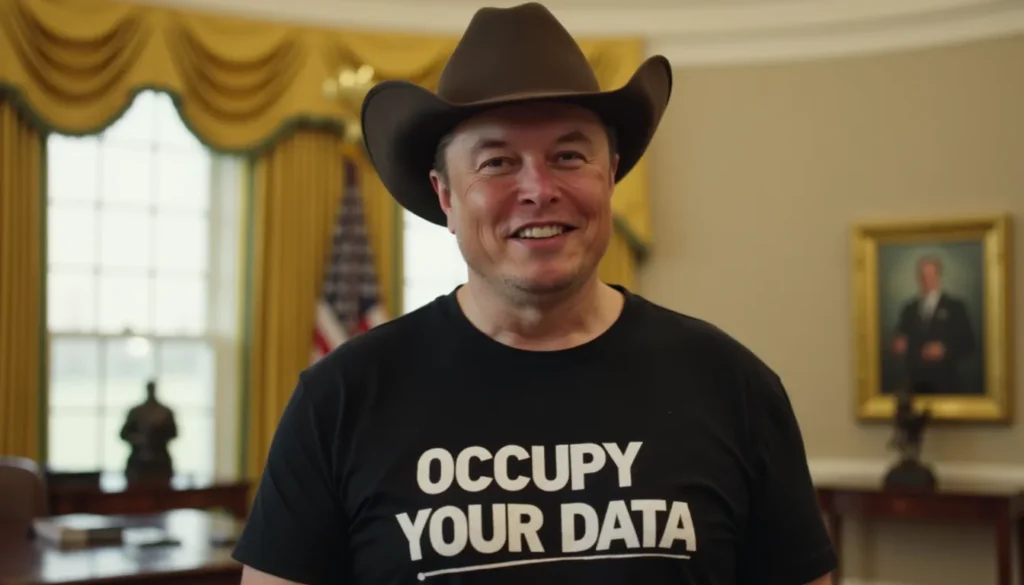

- Present Day (2025): Today, Twitter as it was known is effectively “X”, a platform markedly different in ethos and policy than a few years ago. Under Elon Musk’s ownership, X has shifted rightward both in perception and in practice: previously barred extremists have returned, “free speech” is prioritized over suppressing misinformation or hate, and many liberal or moderate users feel the tone has coarsened and skewed. Journalistic analyses have described it as an “unmistakable shift to the right” – AP’s mid-2023 review noted the DeSantis event crystallized this change, and media observers point out that with Musk often engaging in partisan or conspiracy-tinged content, the platform’s Overton window has moved. On the other hand, some free speech advocates laud X as a bastion of open dialogue, crediting Musk for removing what they saw as an ideological bias in old Twitter’s enforcement. The company is also deeply intertwined with Musk’s personal brand now. Musk’s moves (like the Twitter Files and media label fights) have endeared X to segments of the political right who felt “censored” before, while alienating others. As X heads further into 2025, its future is uncertain – can it become the super-app Musk imagines, or will it struggle under debt and divisive reputation? Is Musk spread way too thin given his dalliances with DOGE and political power? What is clear is that the journey of Twitter from a 2006 side-project to the “X” of today has been one of constant evolution, reflecting broader battles in technology, politics, and society over the power of social media. Twitter, now X, remains a central player in global discourse – just one that’s continually reinventing itself in the face of both opportunity and controversy.
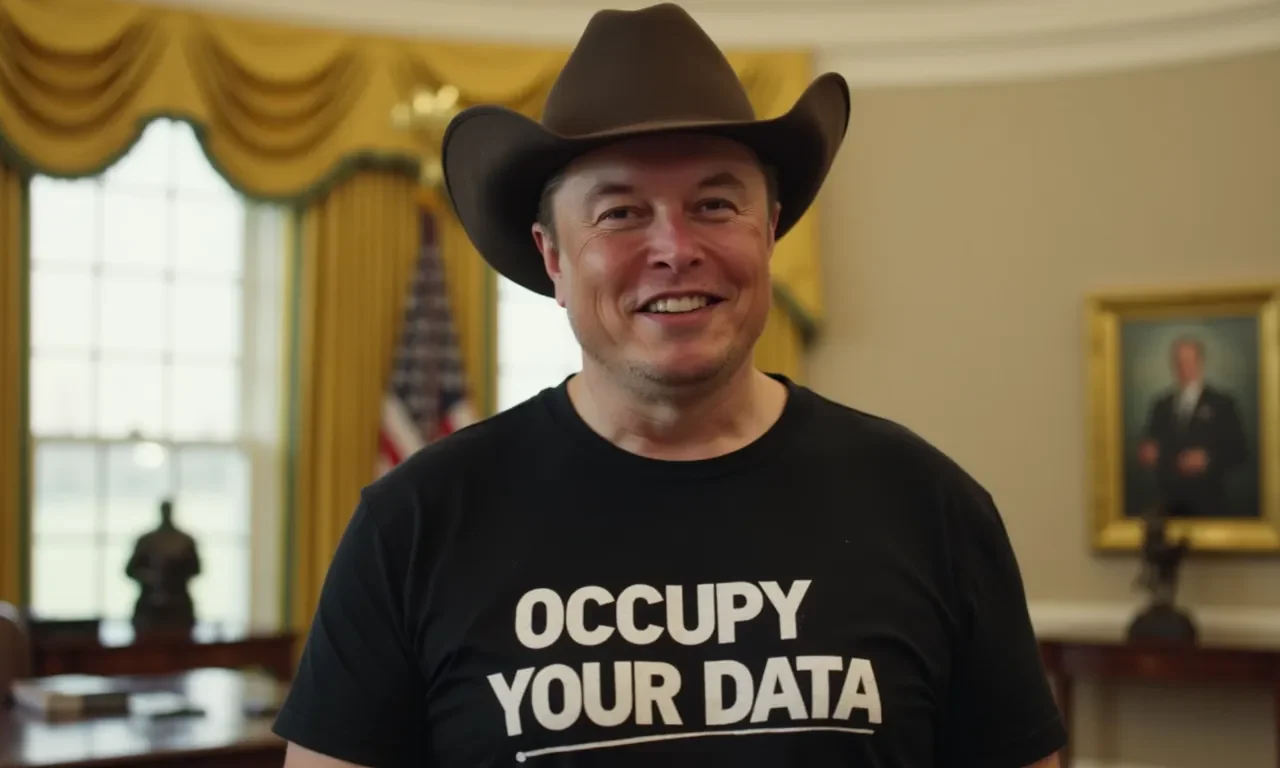
Comments are closed.